Guadalajara – Mexico’s Enigmatic Second City
This is my twentieth and final post from last year’s inaugural Central Mexico tour with Victor Romagnoli put on by Canadian tour company Adventures Abroad. It comes just in time as Victor sets off again on this tour in just a few weeks – October 28, 2019 to be precise. The last post featured Michoacan state and the colonial city of Morelia, the magico town of Patzcuaro and the ruins of Tzintzuntzan. It was a fun filled two days based in Morelia. But alas, all good things must come to an end and our next stop, Guadalajara, will be our last. Won’t you join us this one last time?
Guadalajara is a city I have always wanted to visit, but have some trepidation in doing so. The city was well known as the home base of the largest modern Mexican drug cartel which exploded onto the scene in the 1980’s after much of the power of the Colombian cartels was curtailed. Alison and I have been avid fans of the Netflix series Narcos which focused on Pablo Escobar and the Medellin and Cali cartels. After that series wrapped up, it was followed by Narcos:Mexico where the action, or more correctly, the violence shifted to Guadalajara. That series is still ongoing, but I do know that supposedly things are now under control and tourists have little to fear, which is a good thing because Guadalajara is known as a beautiful colonial city with a flourishing arts scene. I also know Adventures Abroad would not be taking people here if it was unsafe. On a previous trip we visited Medellin, Colombia and the infamous Commune 13, headquarters of Pablo Escobar’s brutal cartel. What we found was a phoenix rising from the ashes of despair as I described in this post. Frankly, I expect much of the same in Guadalajara.
From Morelia to Guadalajara is just over a three hour drive on a modern interstate that takes us from Michoacan to Jalisco state. Jalisco’s motto is “Jalisco es Mexico” because much of what we associate as typically Mexican originated here – mariachi bands, tequila, sombreros, the wide ribboned skirts and the Mexican hat dance are just a few. It’s also a centre of great industrial output, particularly electronics with an unemployment rate of less than 5%. Much of the state borders on the Pacific Ocean where the resort city of Puerto Vallarta is located.
Tlaquepaque
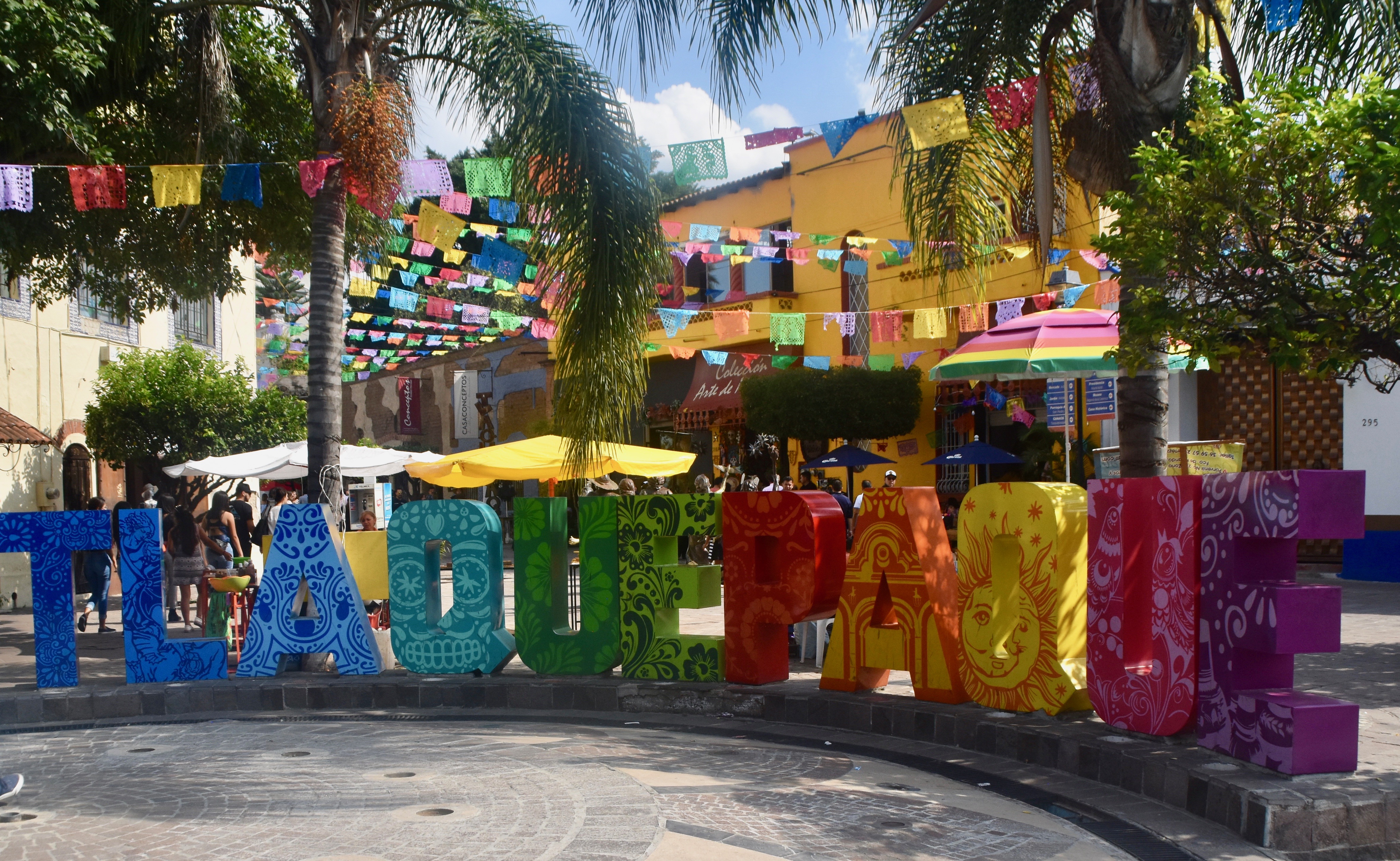
As we enter the outskirts of Guadalajara, passing many industrial parks along the way, Victor announces that our first stop will be in the city of Tlaquepaque which, although having over 500,000 residents is now engulfed by the Guadalajara metropolitan sprawl. This reminds me of the same way that Coyoacan, an ancient district originally well outside the capital of Mexico City, is now considered part of the capitol. Tlaquepaque dates back to pre-Columbian times and has long been noted for its pottery, glass and other arts and crafts. Our bus lets us off just beside the colourful Tlaquepaque sign and we have a couple of hours to explore the mostly pedestrianized streets of the old colonial city.
Nearby is a collection of statues featuring the Mexican hero Miguel Hidalgo uttering the famous ‘El Grito de Dolores’ which helped trigger the Mexican War of Independence. Hidalgo is a major figure in the Guadalajara area and I can’t help but join in his cry for justice and freedom.
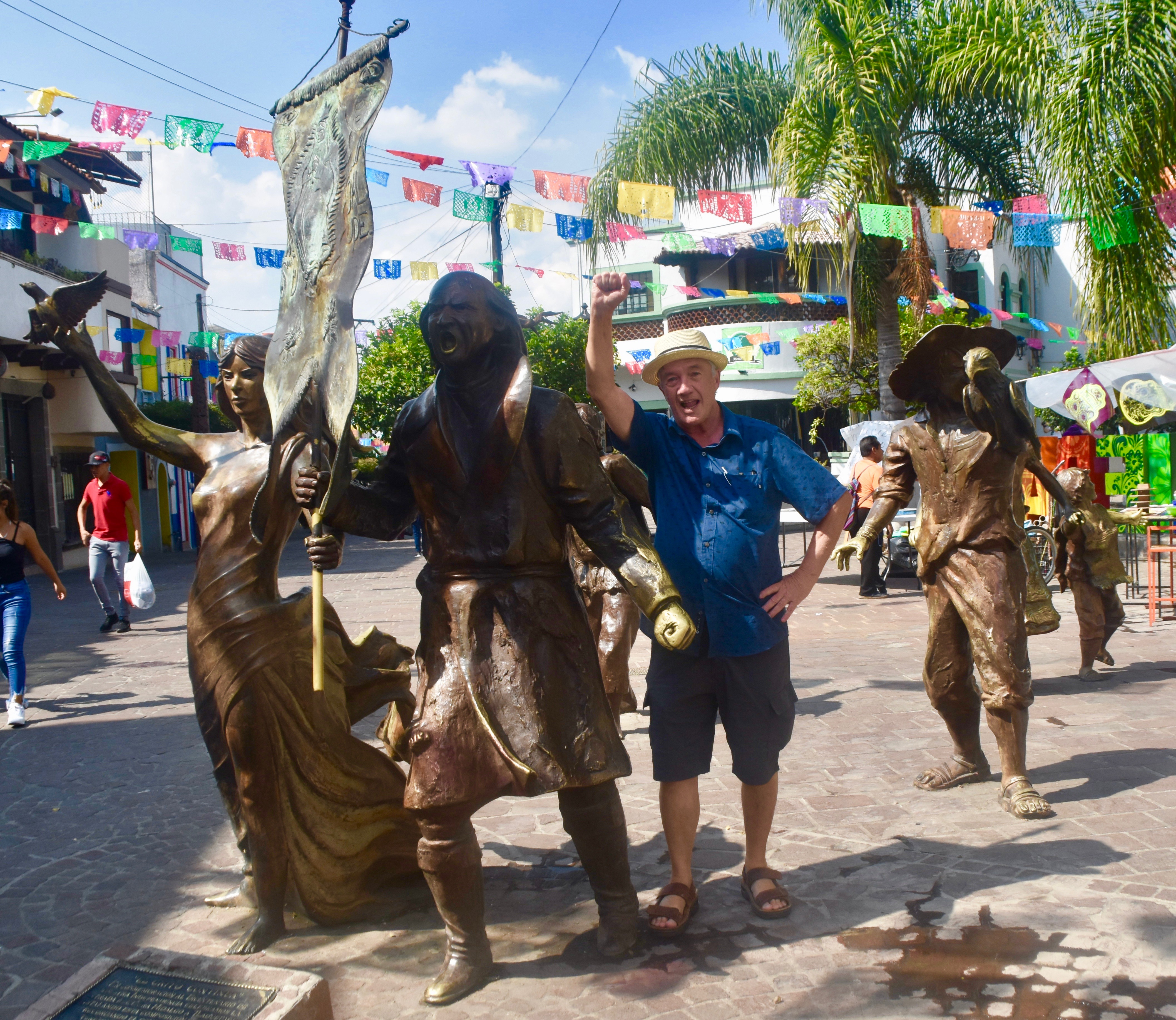
The main street of Tlaquepaque is festooned with flags and banners and alive with both tourists and locals. Actually there are a lot of what appear to be middle and high school age kids on day trips doing the usual things kids of these ages do and it’s a pleasant surprise to see that most of them are not glued to their iPhones.
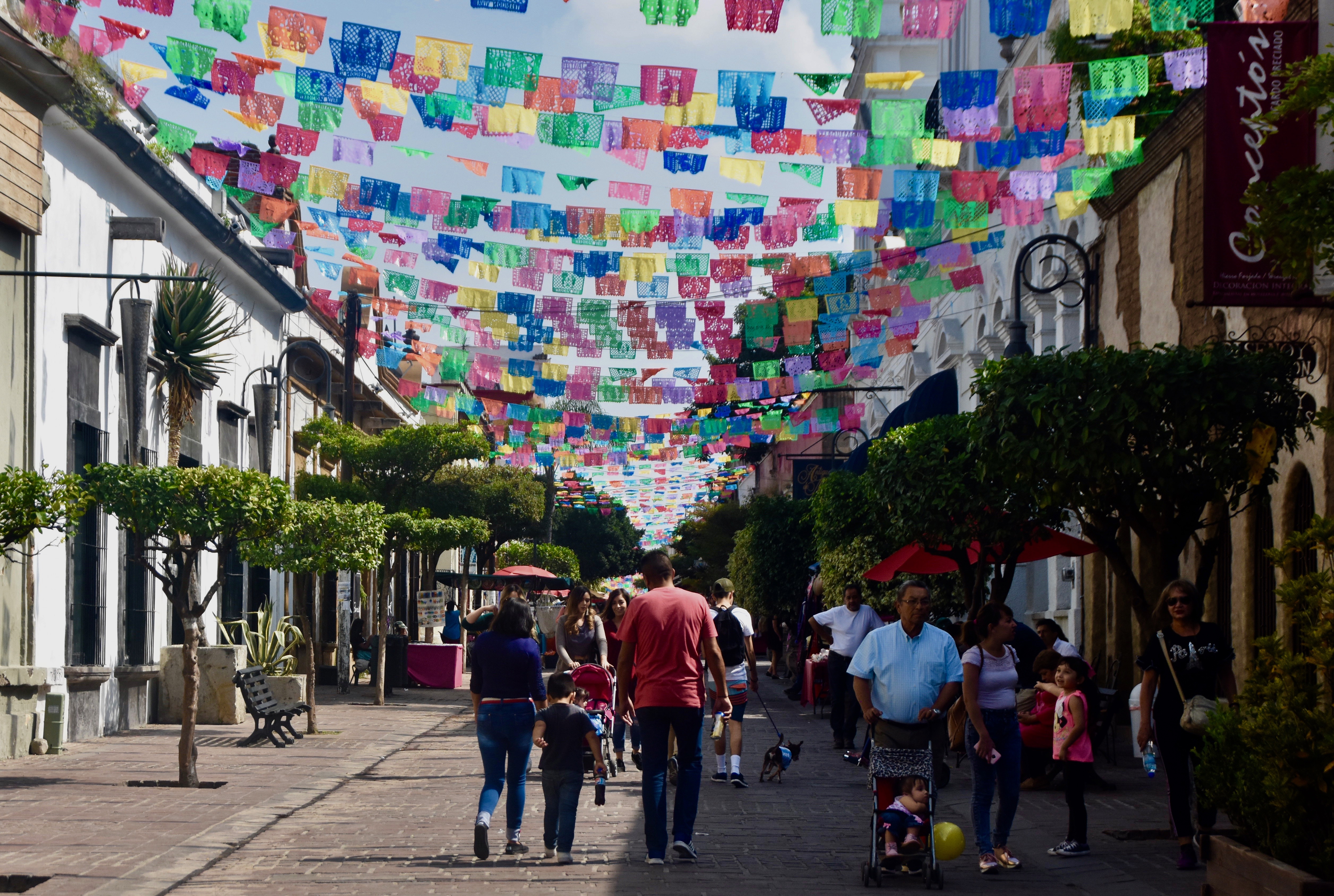
The old city is laid out in a grid which makes it easy to navigate and the lack of vehicles on many streets makes it a pleasure to window shop and people watch. Even though we are now well past the Day of the Dead there is still much evidence of the celebrations including this striking Katrina figure with real flowers in her hair. Must have been a hippy during her life.
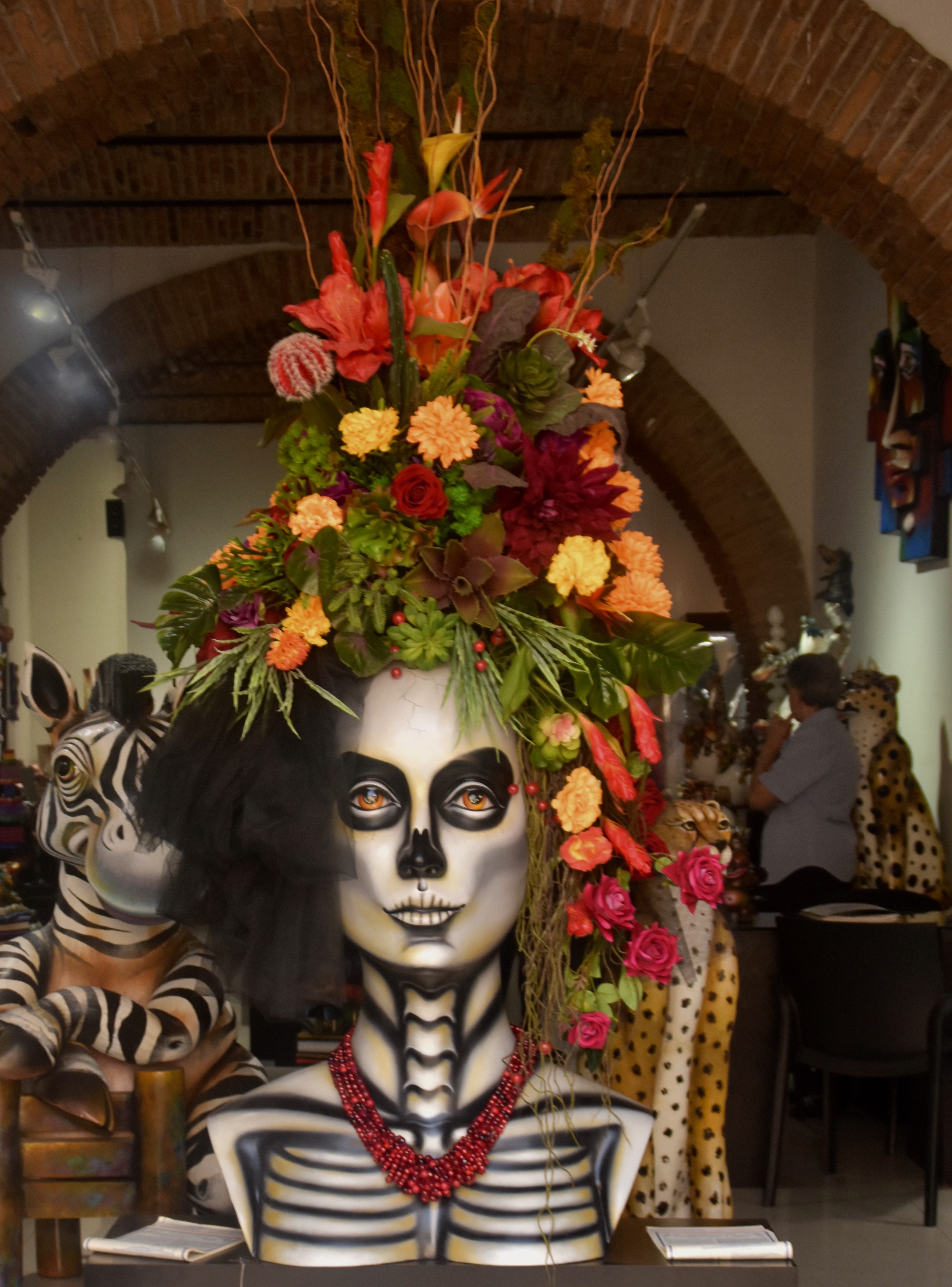
The quality of the goods for sale ranges from the usual cheap tourist crap which attracts the school kids, to very upscale galleries where at one time and maybe still, the narcos wives and mistresses would spend a fortune on items like this artsy chandelier that reminded me of some of Dale Chihuly’s work..
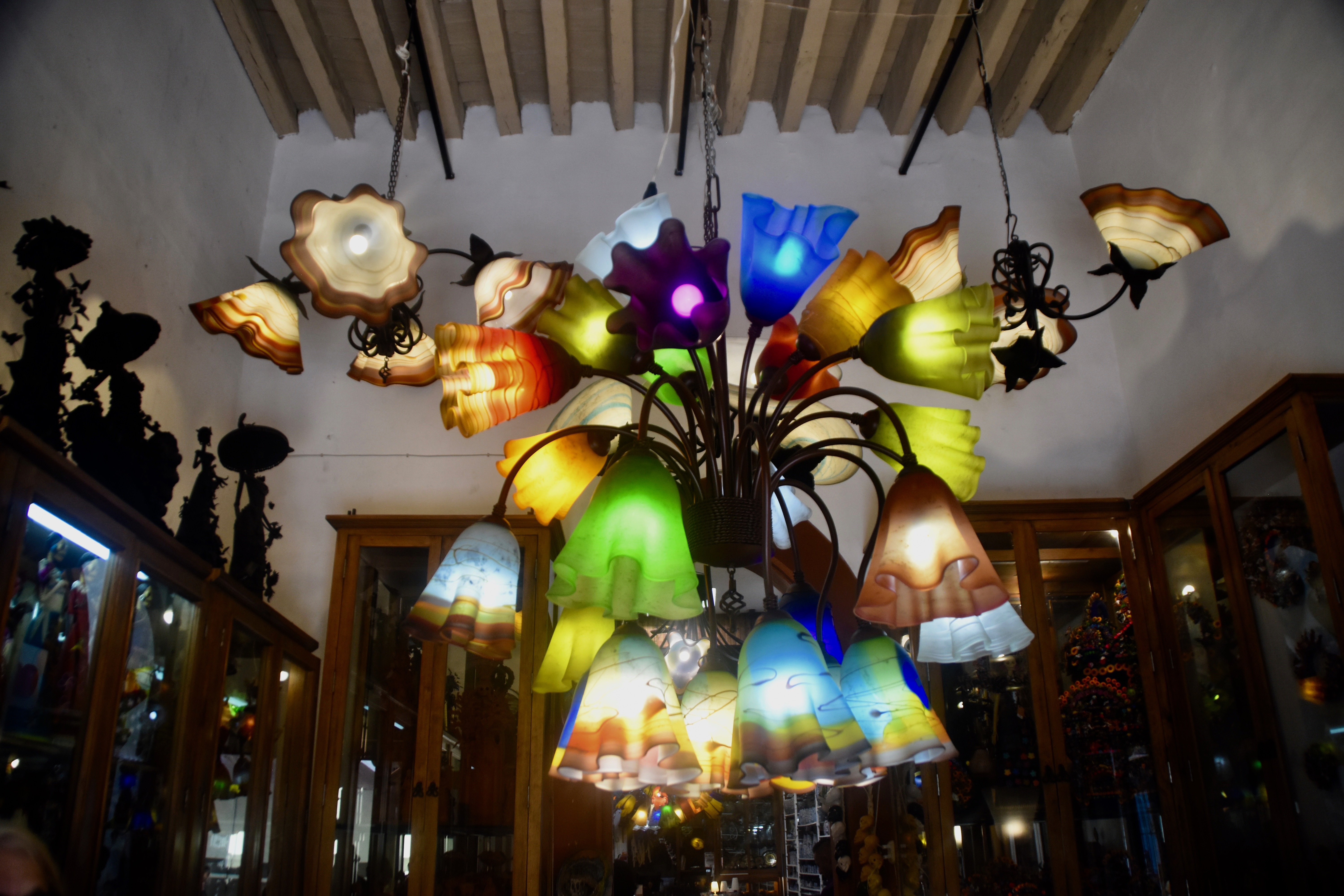
Tlaquepaque also has some great public art. As home to the mariachi band, the sombrero and the wide flared dress it was only fitting that all three should be immortalized in copper in this work titled ‘Creo en Mis Raices’, which translates as ‘I believe in my roots’.
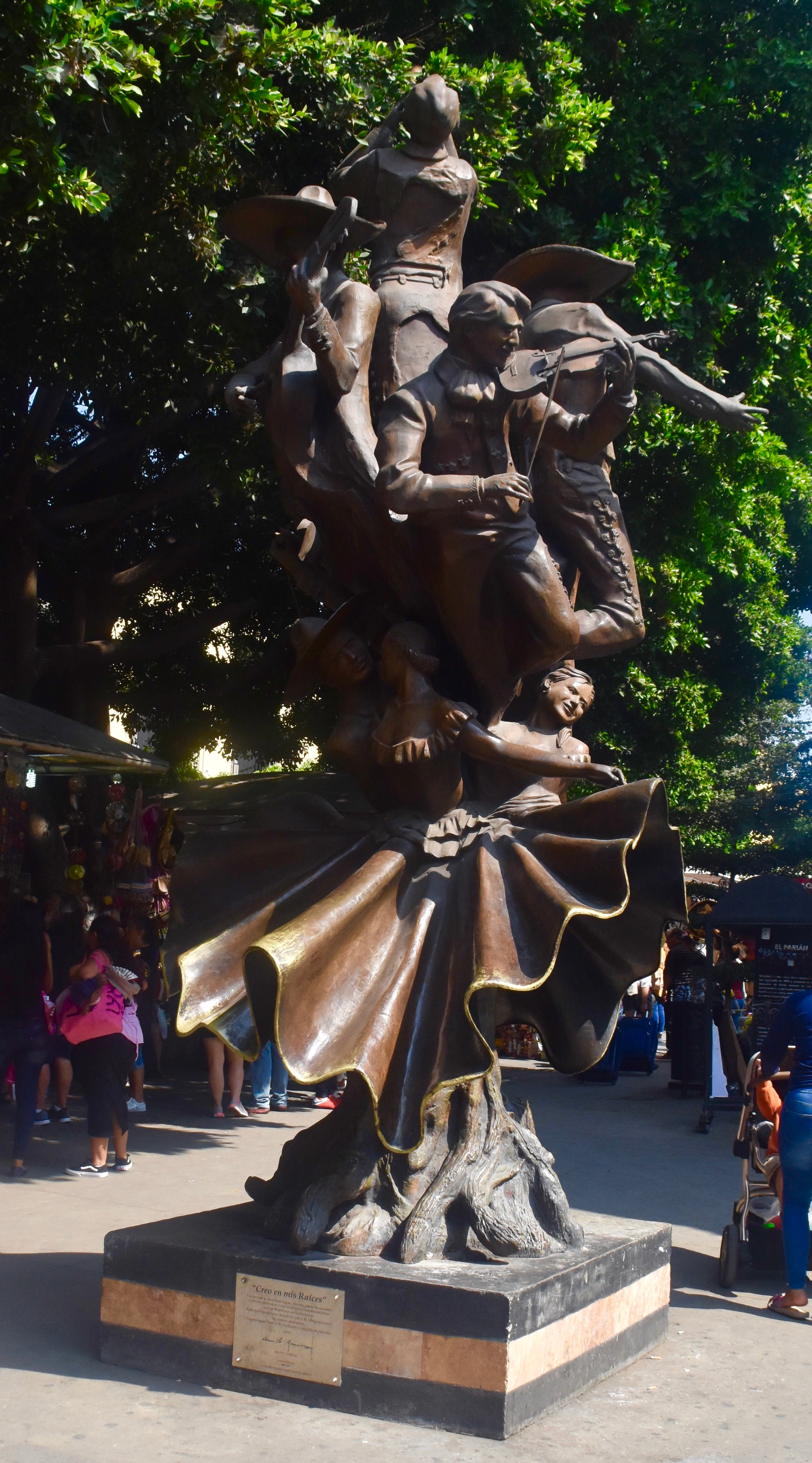
Just as popular with photographers was this enigmatic rooster man, ‘El Hombre Gallo’, by local artist Sergio Bustamante in front of his gallery. The head gear definitely evokes the dress of ancient Mexican priests, but trying to figure out the symbolism is beyond me. To paraphrase Freud, “Sometimes a rooster man is just a rooster man”.
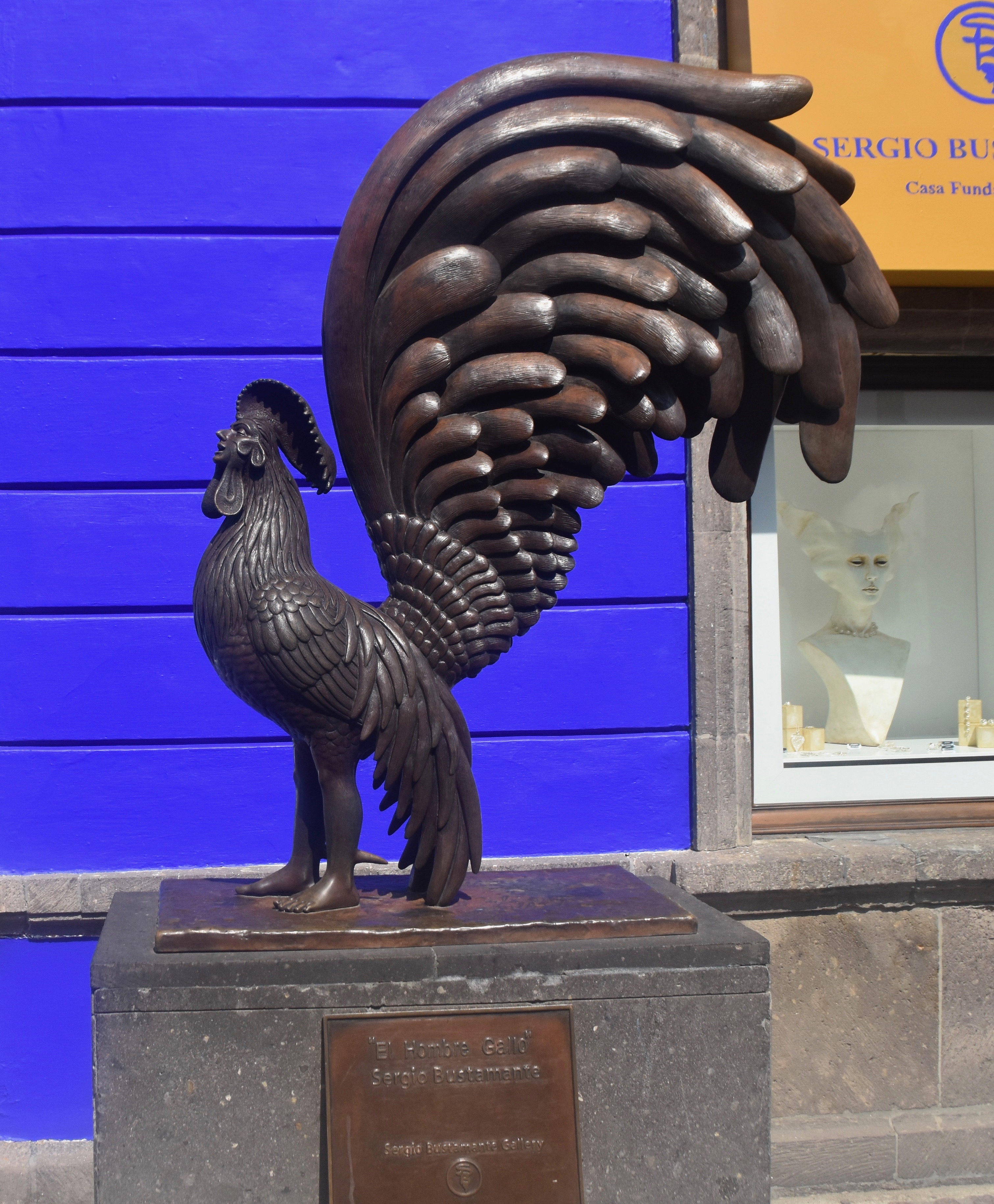
Our final stop in Tlaquepaque was the small verdant plaza known as the Jardin Hidalgo with a bandstand and the colourful Parroquia de San Pedro Apostol in the background. I would have loved to spend more time in Tlaquepaque and highly recommend it to anyone visiting Guadalajara. We saw nothing comparable in terms of its down to earth size and artsy feel in the city proper.
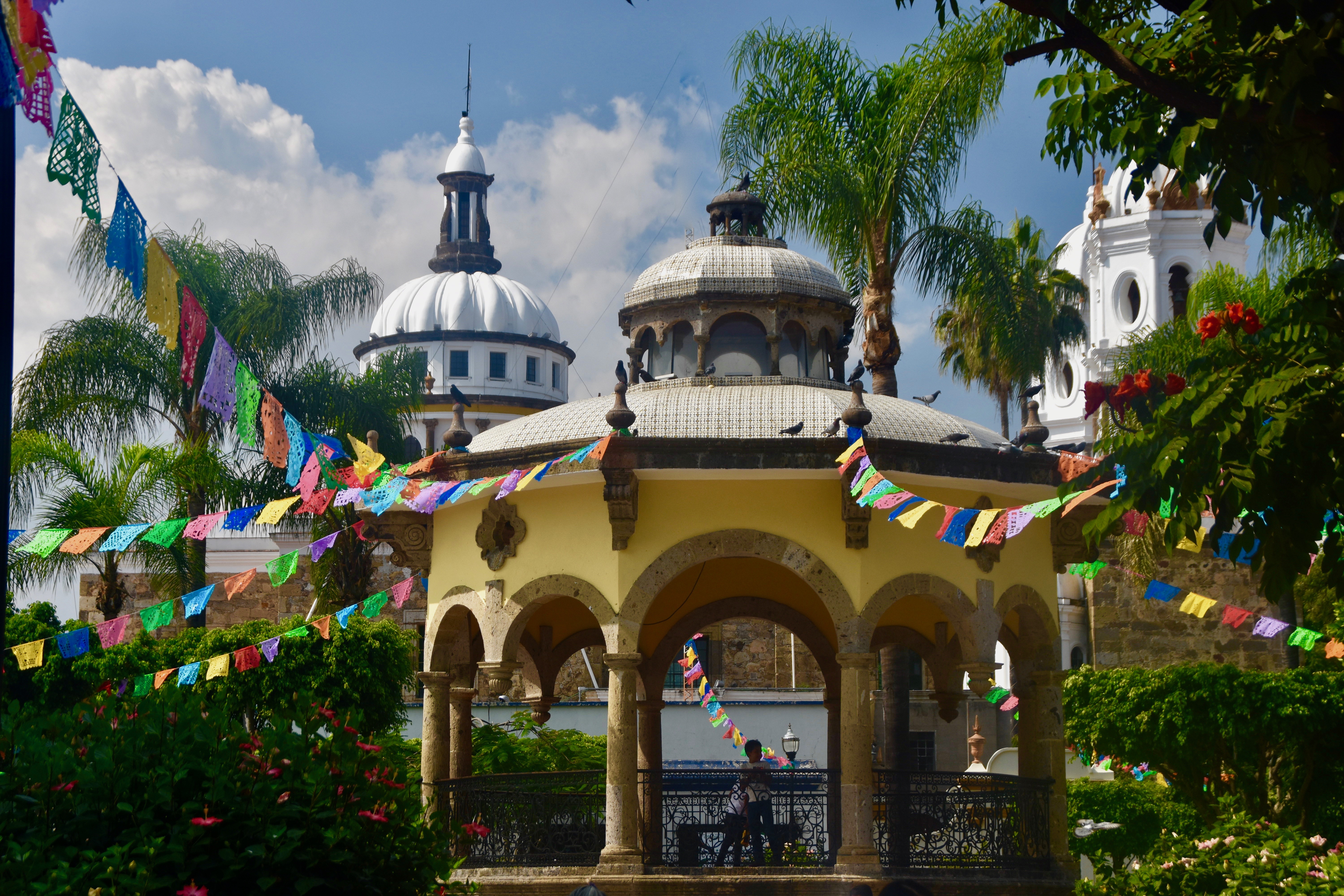
History of Guadalajara
After reboarding the bus we made our way into the historic centre of Guadalajara with little difficulty. During this entire trip I was very pleasantly surprised at how easy it was to navigate into the very heart of these colonial cities compared to European cities where gridlock is often the norm.
The current location of Guadalajara is the fourth site at which Spanish conquistadores attempted to set up a settlement from 1532 to 1542. The Spanish were under the command of the insanely ruthless Nuño de Guzmán who we first encountered in the last post where he slaughtered and enslaved the native population of Michoacan before moving on to the Jalisco area. He was so bad that he was recalled to Spain for treason, but got the last laugh as the new settlement was named Guadalajara, for Guzmán’s home town in Spain. Although it sounds Spanish, Guadalajara is actually Arabic
Of course, no great city, despite the recorded facts, can pass up a great foundation myth – think Rome and Romulus & Remus for the best example and of course, that of Mexico City which I detailed in an earlier post. In Guadalajara’s case it is the legend of Beatriz Hernandez, wife of one of the early settlers. After getting false starts because of lack of water, attacks by the native population and Guzmán’s whims it looked like the group was about to re-enact Moses forty year trek through the desert when Beatriz simply said enough is enough we are staying put here come hell or high water. And Beatriz is still there on that very spot.
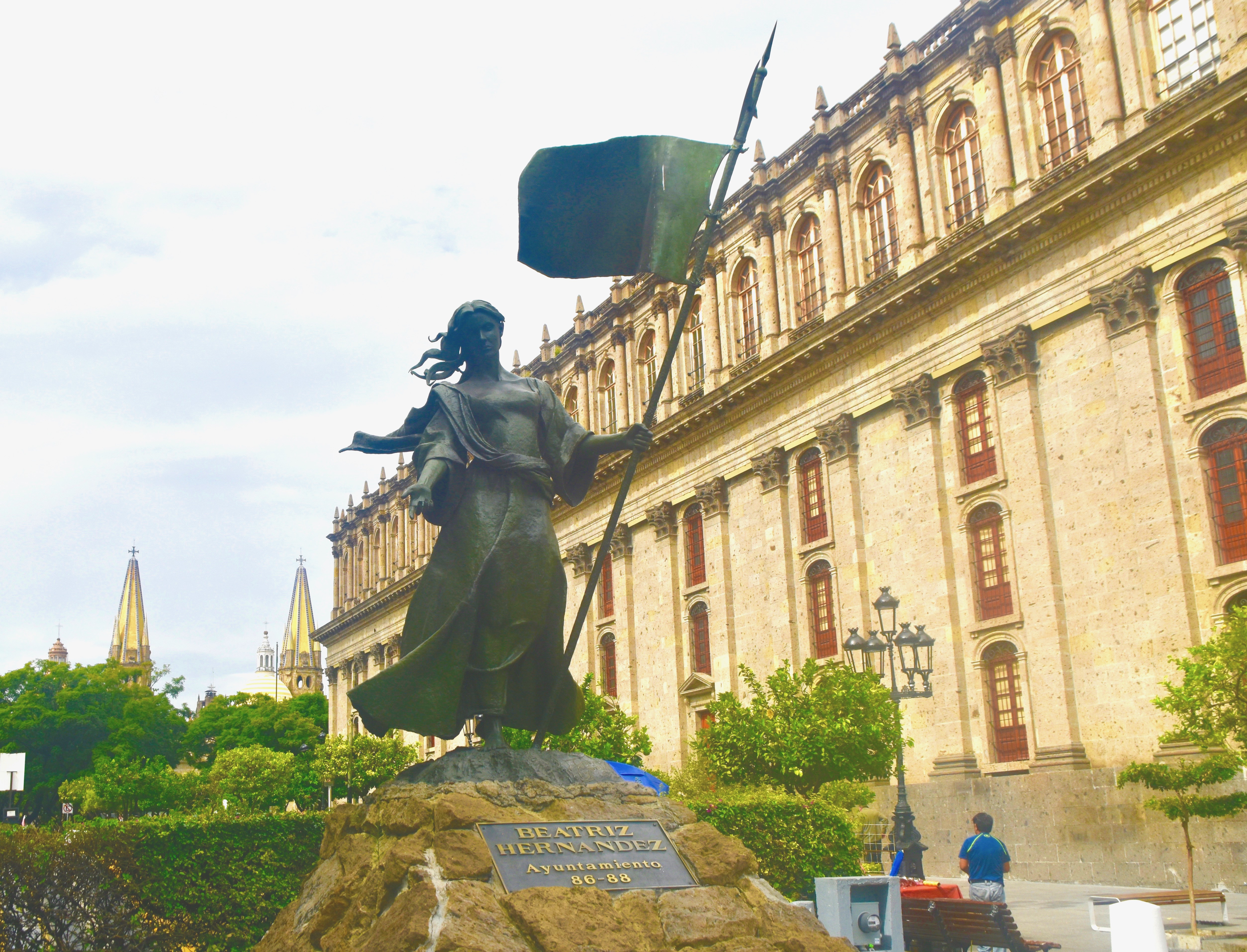
After surviving a number of early wars with the Indigenous tribes who were justly pissed off at the way Guzmán and his followers had treated them, the settlement grew and prospered as the regional centre for what was then called Nueva Galicia after the province in northwest Spain. The cathedral was begun in 1563 and flocks of Augustinians and Dominicans flooded in to spread the word. The university was founded in 1791 and the city solidified its reputation as a religious and educational centre, although that’s probably an oxymoron.
Guadalajara played an important role in the War of Independence and especially in relation to Miguel de Hidalgo with whom we have become very familiar. It was to here that he took the huge army he had raised at the beginning of the war after chickening out on an all out attack on Mexico City. That was a grave mistake. It gave the Spanish forces time to regroup and on January 16, 1811 a force only one tenth the size of Hidalgo’s routed him at the Battle of Calderon Bridge just outside the city. That put an end to the first phase of the War for Independence. Hidalgo fled, but was captured and executed, with his head being impaled on the side of the granary in Guanajuato, a site we visited a few days ago. He is still a revered figure in Guadalajara as we have already observed at Tlaquepaque.
After independence, the city endured the seeming revolution of the week era that categorized much of the country’s 19th and early 20th century history. Recently it has apparently survived another dark period, the domination of the city by the narco cartels or so we are told. Time now to get out and explore this final colonial city on our tour of Central Mexico.
Exploring Guadalajara
Guadalajara’s principal tourists sites are remarkably easy to access on a walking tour that starts at the cathedral and moves east through a series of plazas and pedestrianized streets to the Instituto Cultural de Cabañas with its magnificent Orozco murals with numerous stops along the way. What follows is an amalgam of the walking tour with Victor and the local guide and my own travels over the two days we spent in Guadalajara.
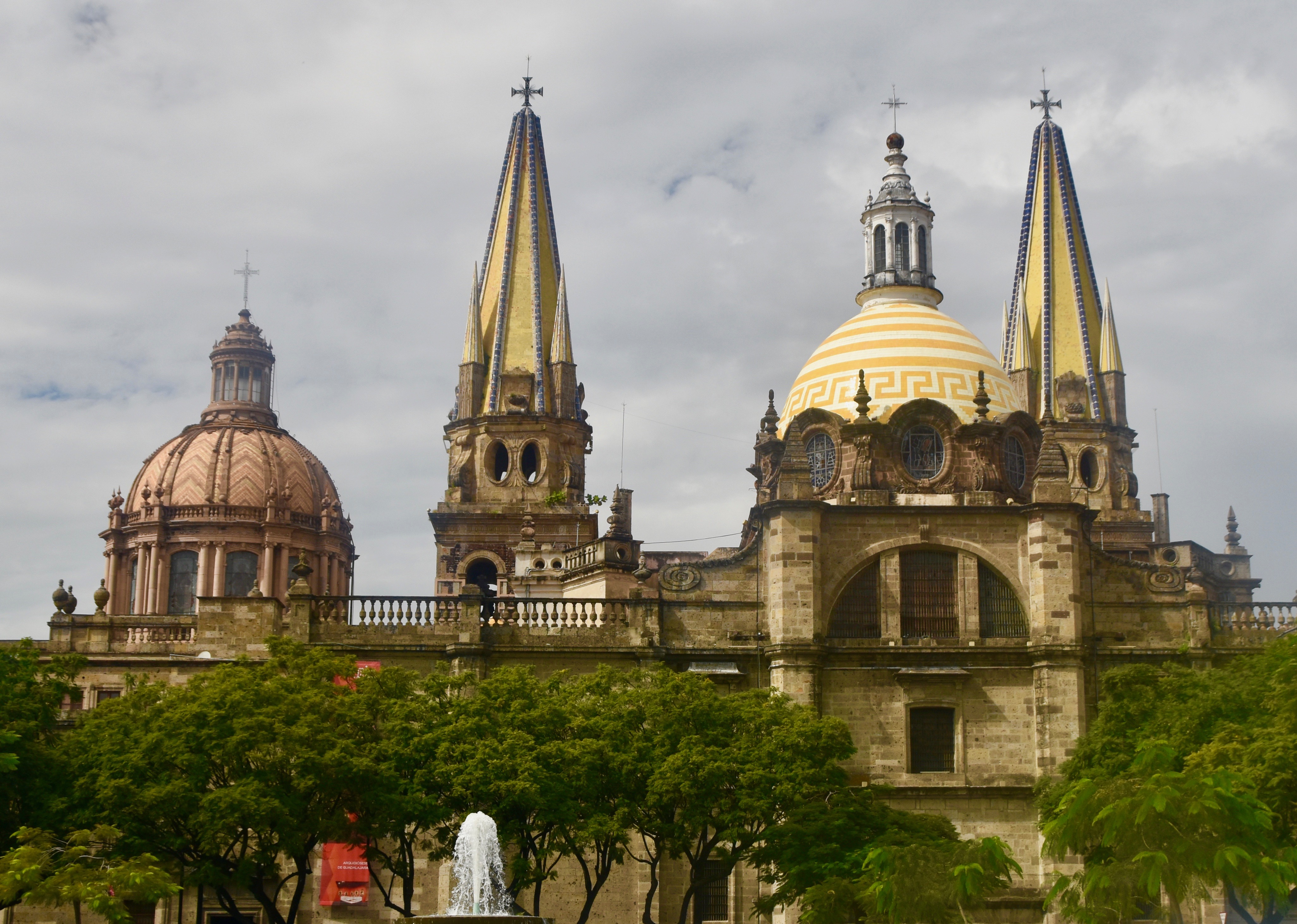
The starting point is the Guadalajara Cathedral that figures prominently in an aerial shot of the opening scenes of Narcos:Mexico. It took sixty years to complete and twice has had to replace the spires and dome that were destroyed by earthquake damage. That explains the somewhat hodgepodge look of the exterior, although I was impressed with the Greek key motif on the main dome. Like many old large buildings, the cathedral looks better the farther away you are from it, such as this view from Plaza de Armas. Throw in some people and the place comes to life.
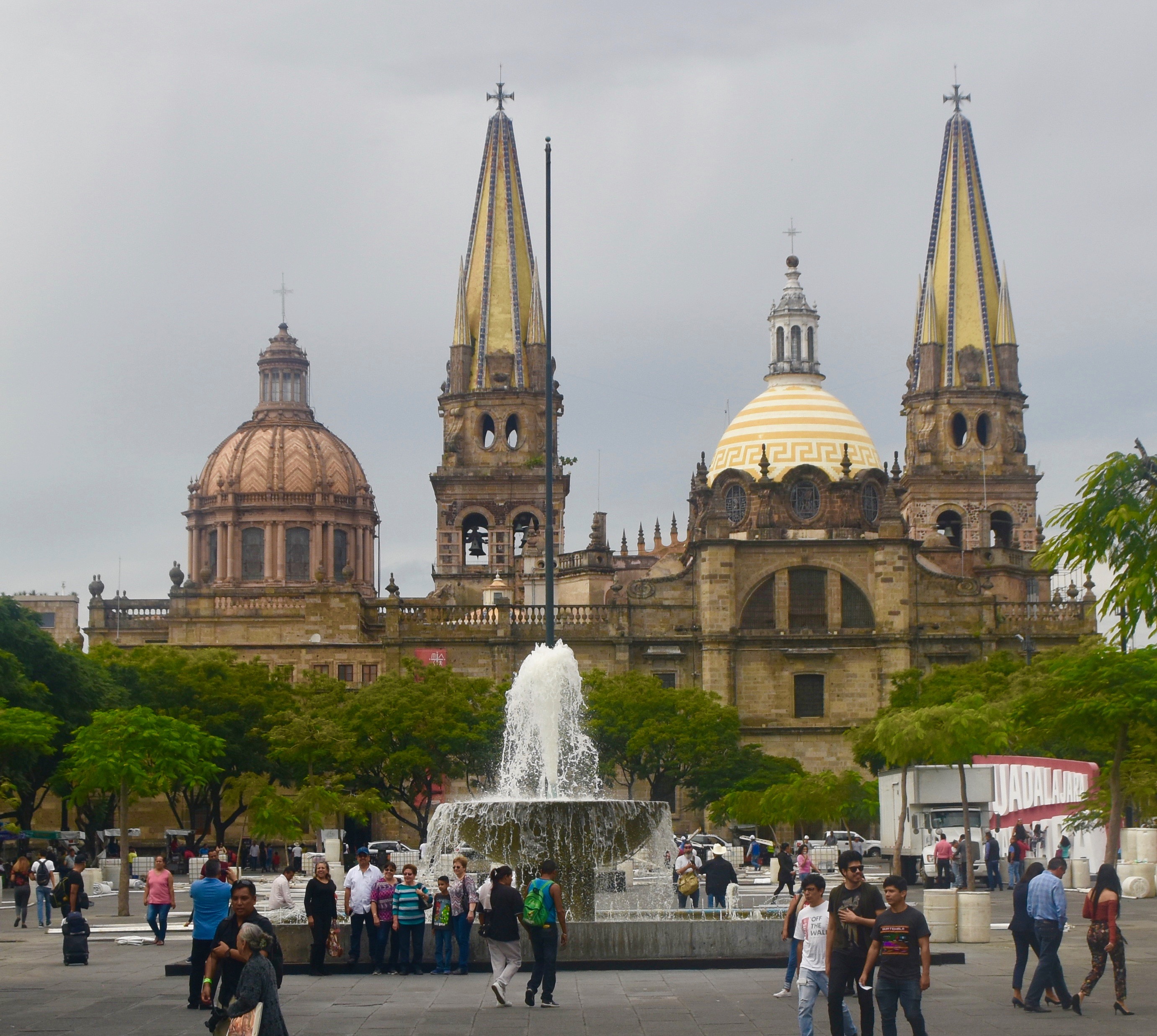
Another view is from the city signs that are now found in virtually every Mexican city zocalo.
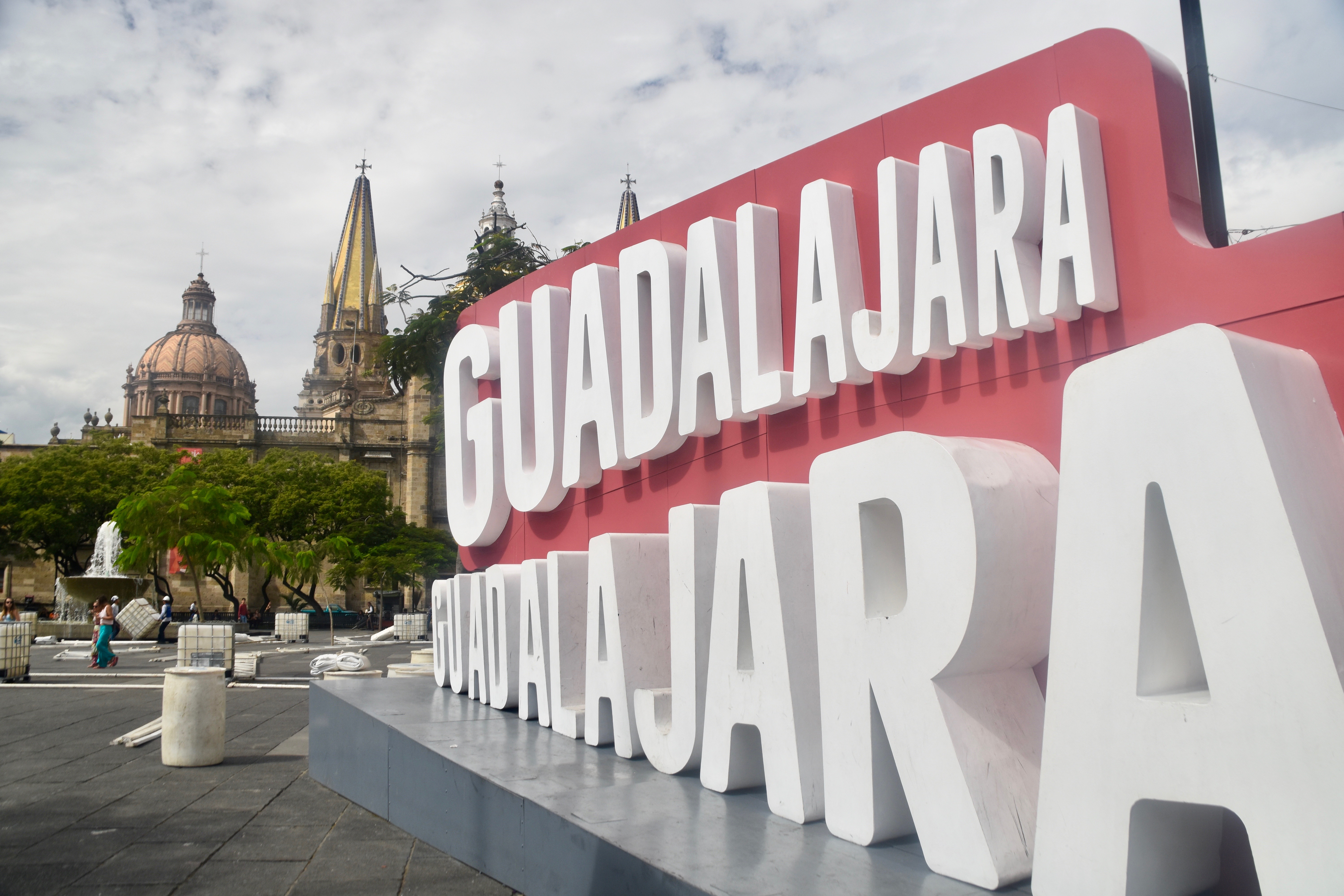
The interior of the cathedral is suitably impressive and surprisingly restrained.
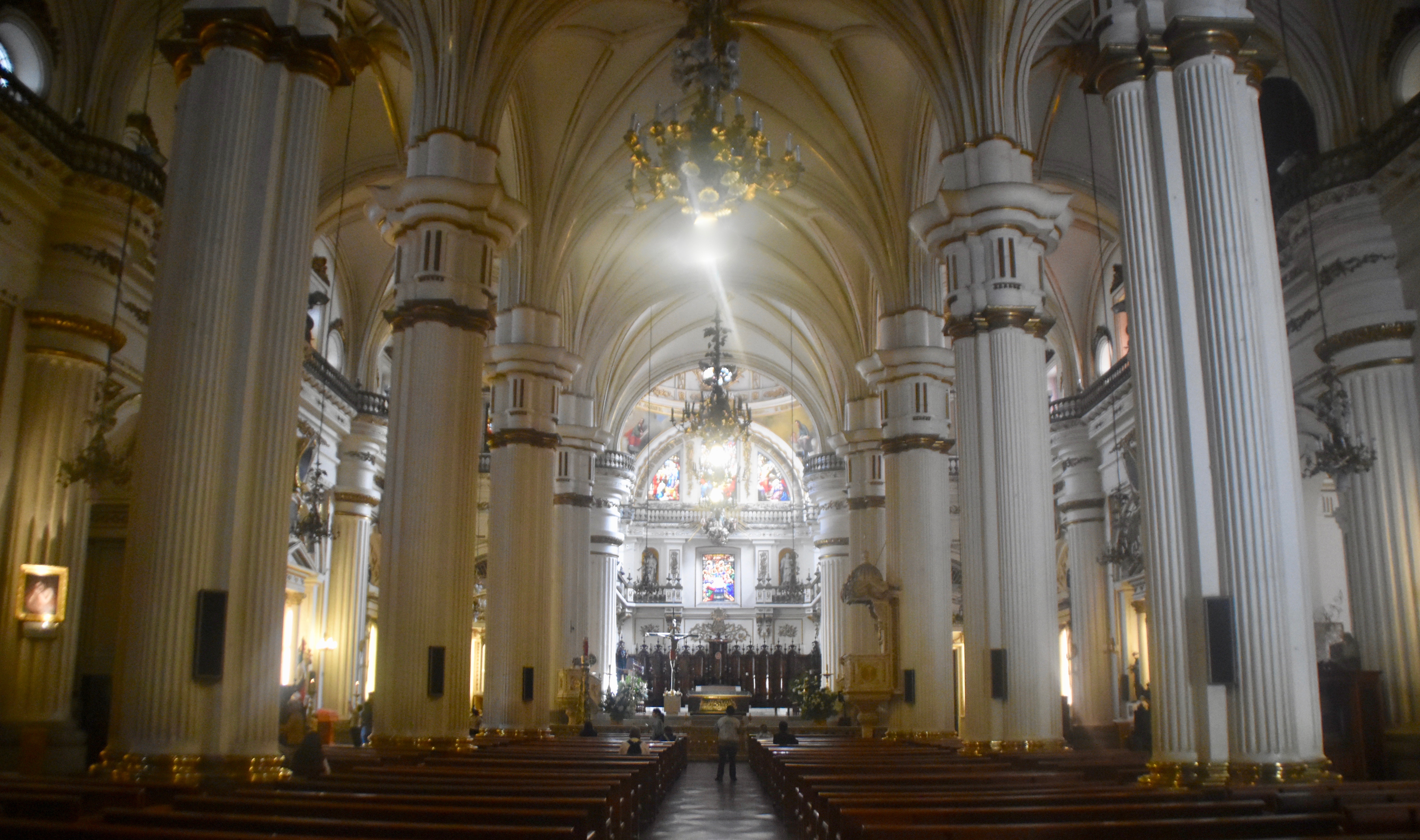
The bone white columns with gold trim were particularly striking.
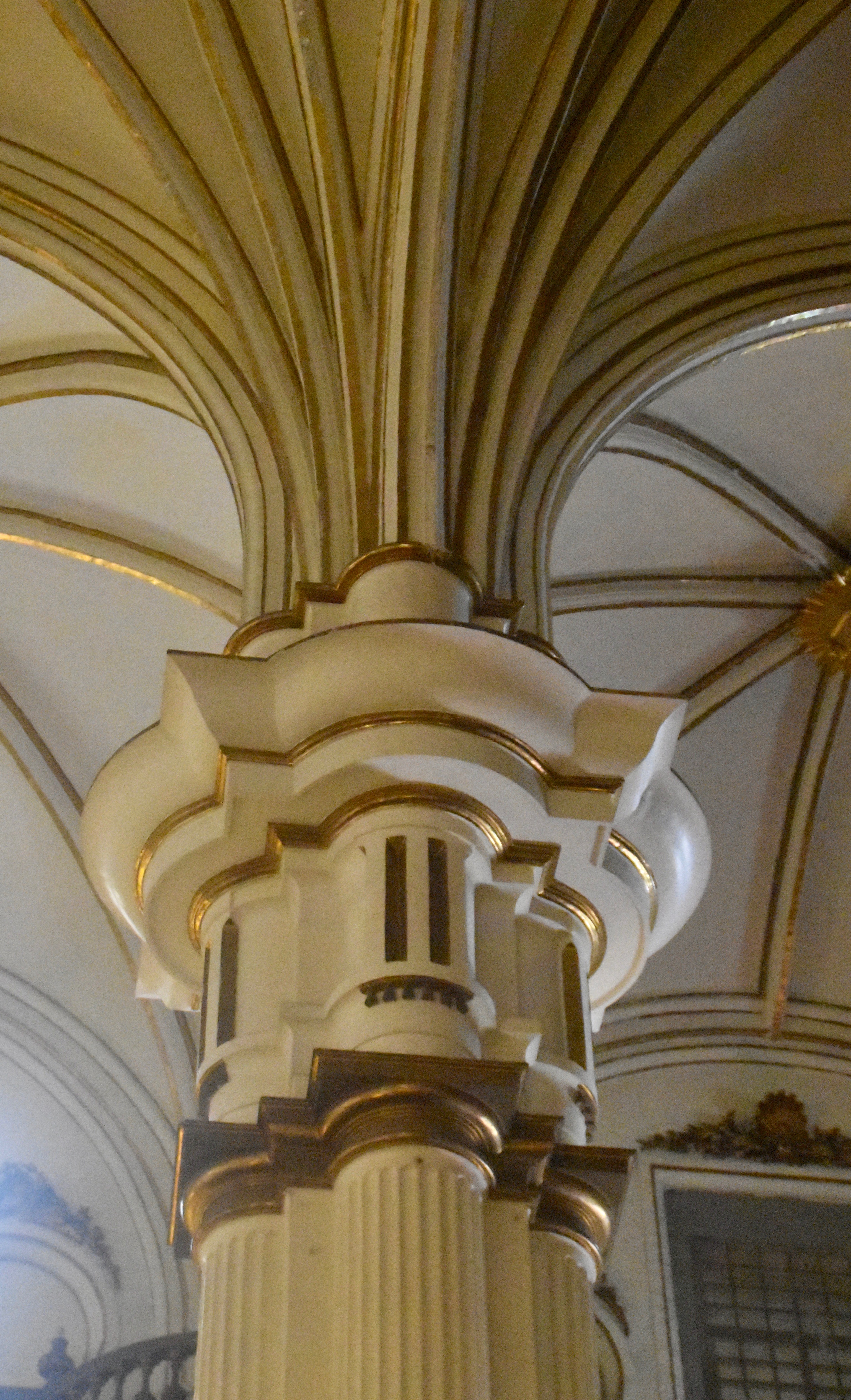
But overall, these places leave me pretty cold as I expect anyone who has followed my posts will know.
Continuing through the Plaza de Armas you come to the Palacio de Gobierno which is the seat of government for Jalisco state. This is a photo from the government website.
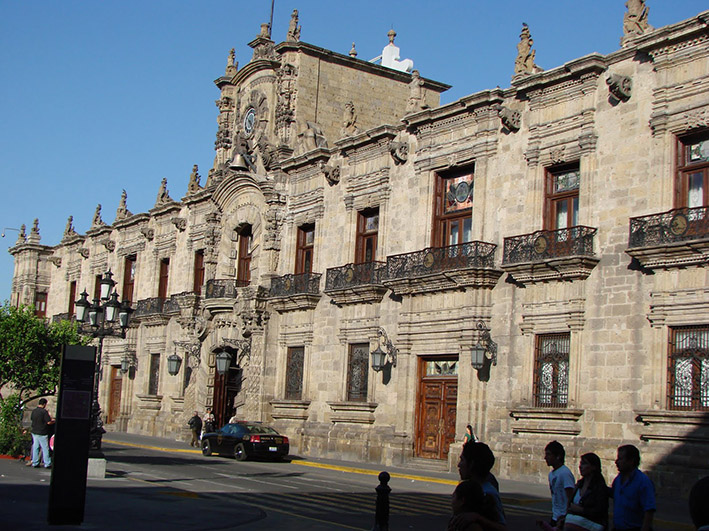
Inside there are several murals by the great Guadalajaran artist José Clemente Orozco that are must sees in any city tour. Fortunately our local guide was there to help us interpret them. I’ve seen enough modern Mexican murals by now to know that they are meant to be understandable to both the literate and illiterate, as long as they have the rudiments of Mexican history, which of course, we do not.
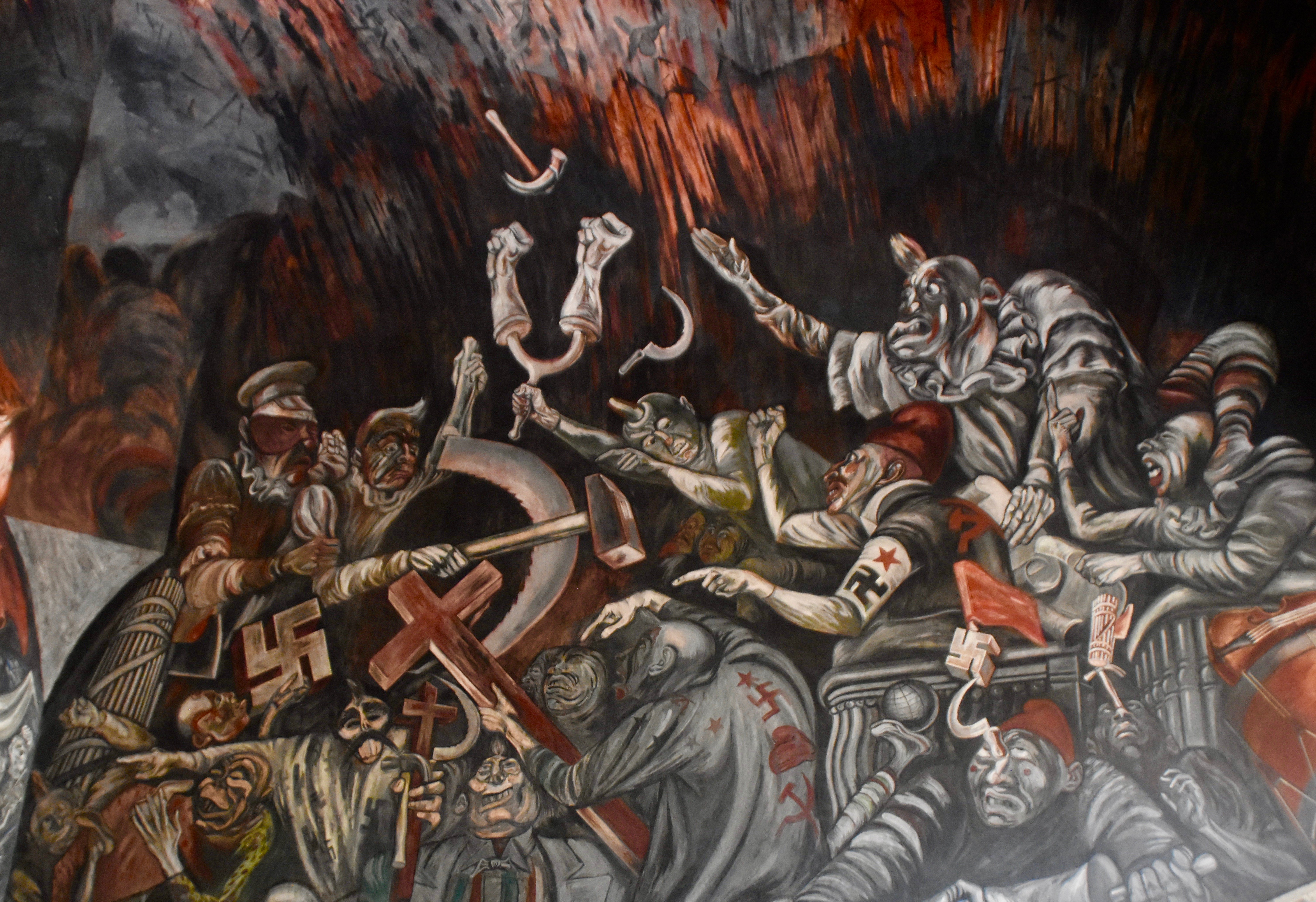
Orozco painted primarily in very dark colours, which is not surprising because his themes were almost always dark. The hammers, sickles and swastikas being brandished, along with a cross tellingly, are symbols that Orozco found repugnant along with the doctrines they represented. Many of the 20th century Mexican muralists were socialists if not outright communists, so I was surprised to find that Orozco favoured the middle way – democracy which has had a hard time in Mexico over much of its history.
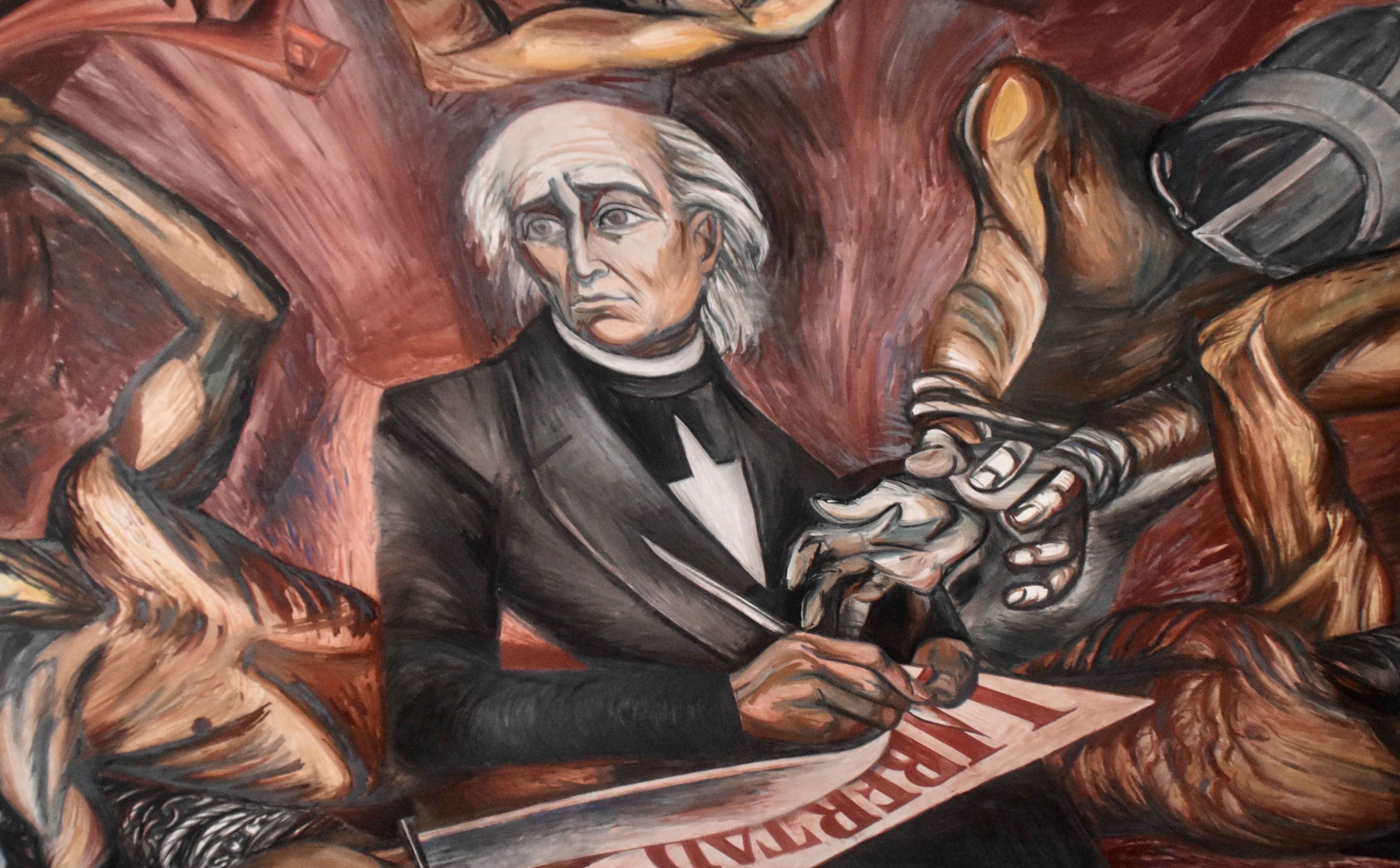
This is a mural of our friend Hidalgo signing the emancipation of the slaves some fifty plus years before Lincoln did the same thing in United States. From the look on his face he seems forewarned that his action will lead to an early grave.

Hidalgo is not the only Mexican hero in this mural although these others are definitely given much less prominence than Hidalgo. On the right is José Morelos with his trademark bandana and beside him Benito Juárez, the first and I think still, the only purely Indigenous leader of Mexico. I don’t know the next figure, but the last on the left is surely Emiliano Zapata, moustache and all.
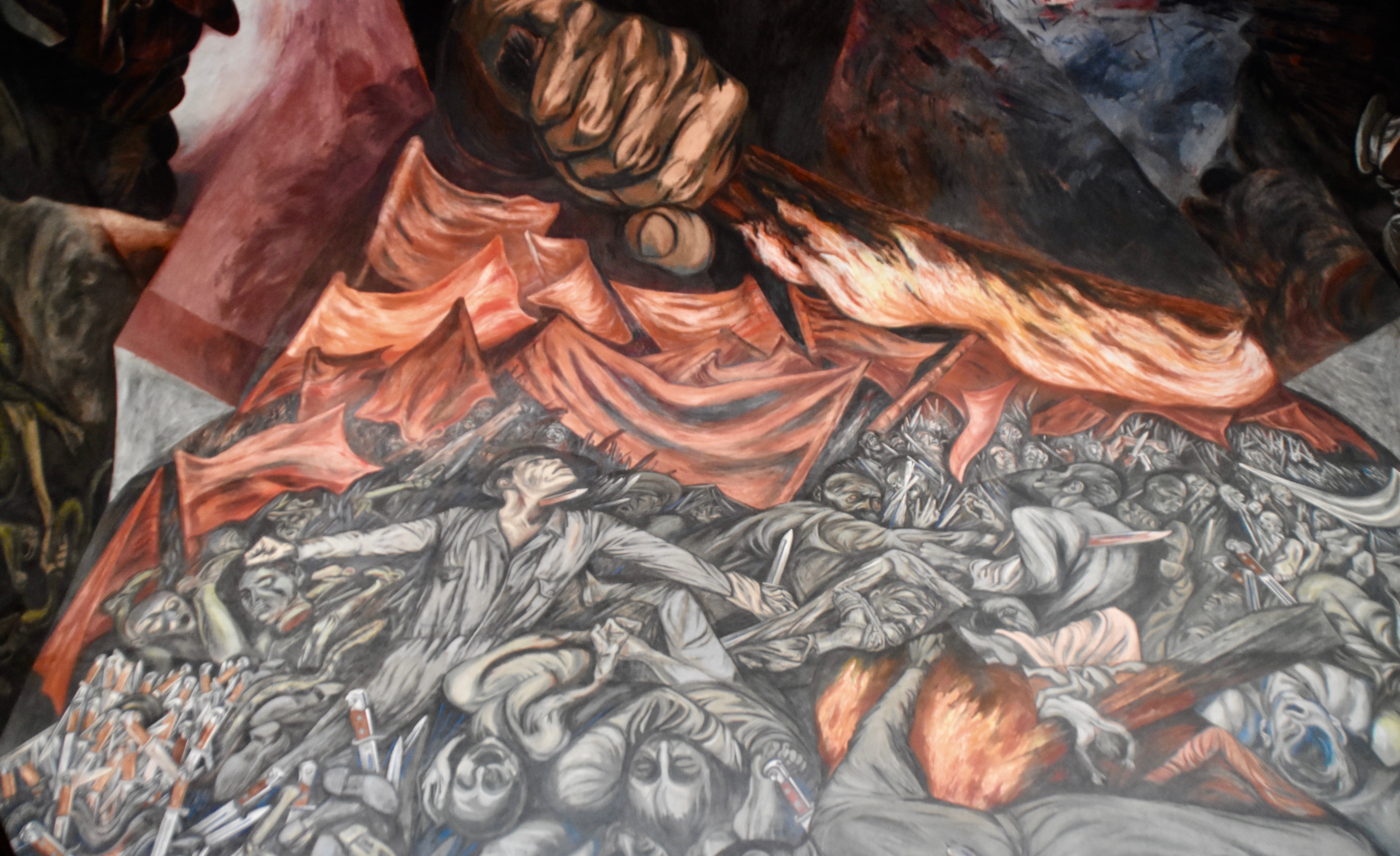
Another mural is too big to get into one photo. This is the bottom half of a mural titled The People and Its Leaders and it depicts what the guide describes as ‘The Lost Souls’. It is truly gruesome to view in person as all of the killing is done with sharp blades – no guns or cannons; and the effect is chilling.
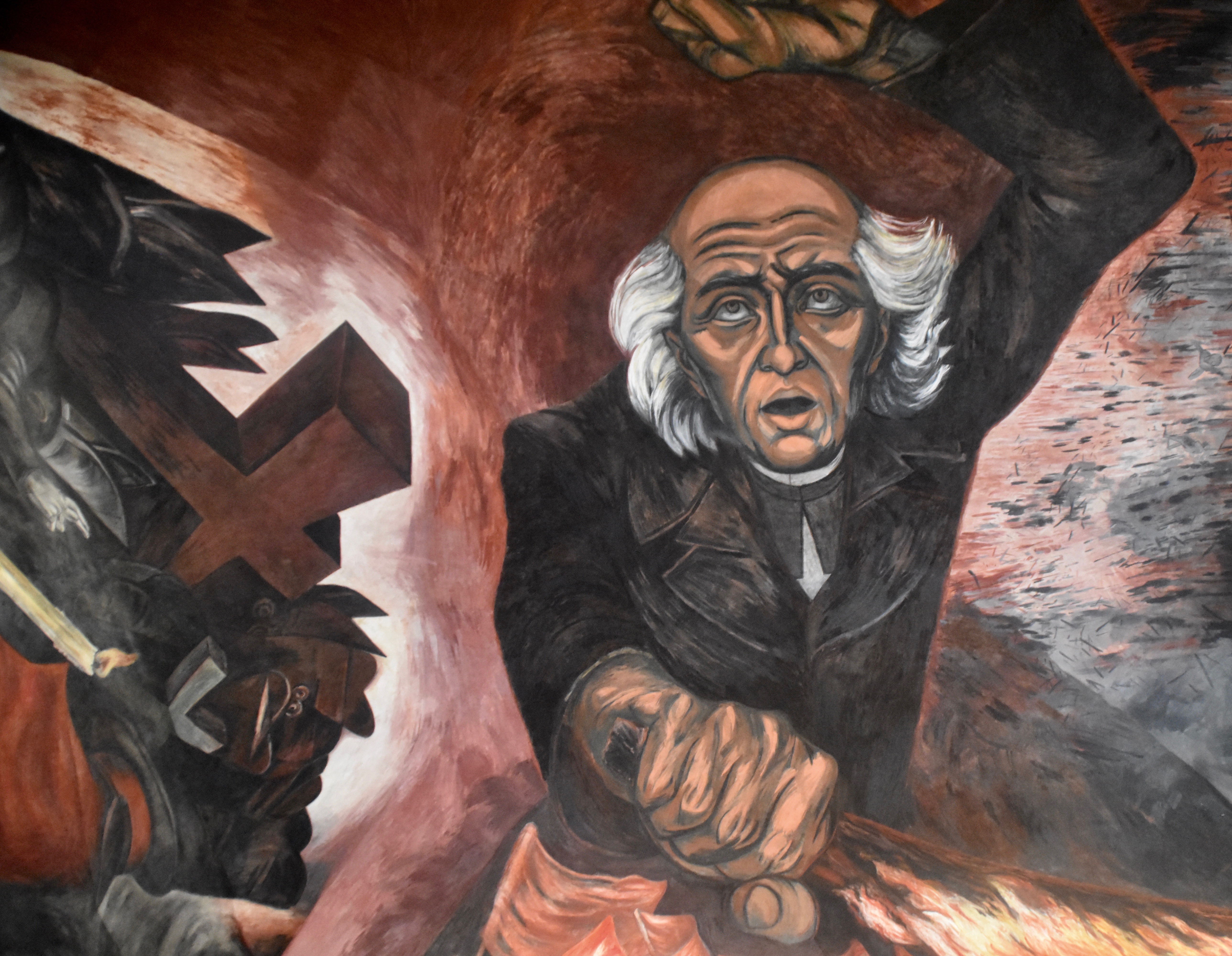
Above the lost souls is Hidalgo brandishing a torch which symbolically will ignite the fight for freedom. Heady stuff.
Before leaving go out into the courtyard for this view of the cathedral spires.
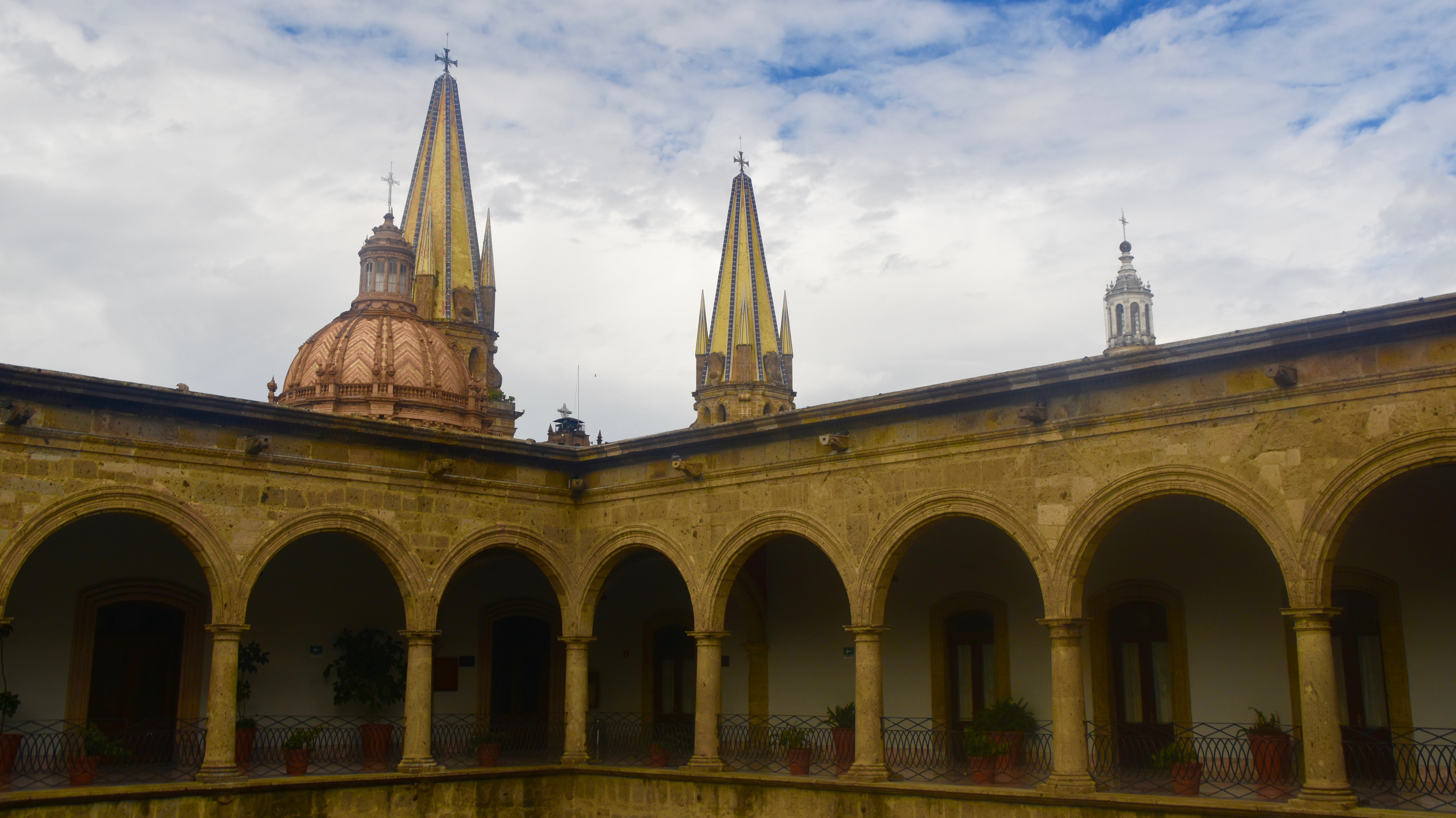
The Palacio de Gobierno is fronted one one side by Liberation Plaza, kitty corner to which you will find the Rotonda which features statues of famous natives of Jalisco state.
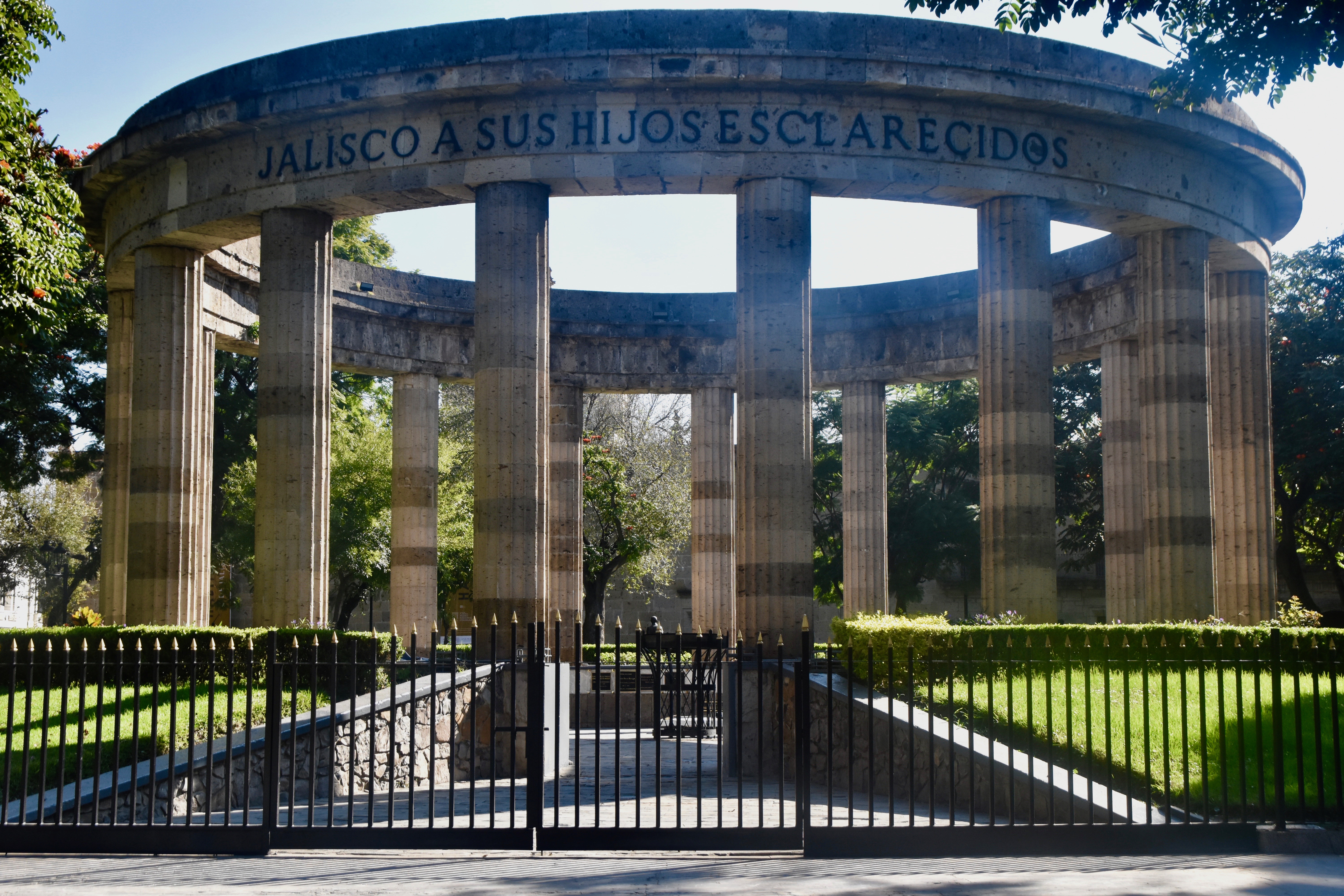
The statues are outside the rotunda and include one of Orozco.
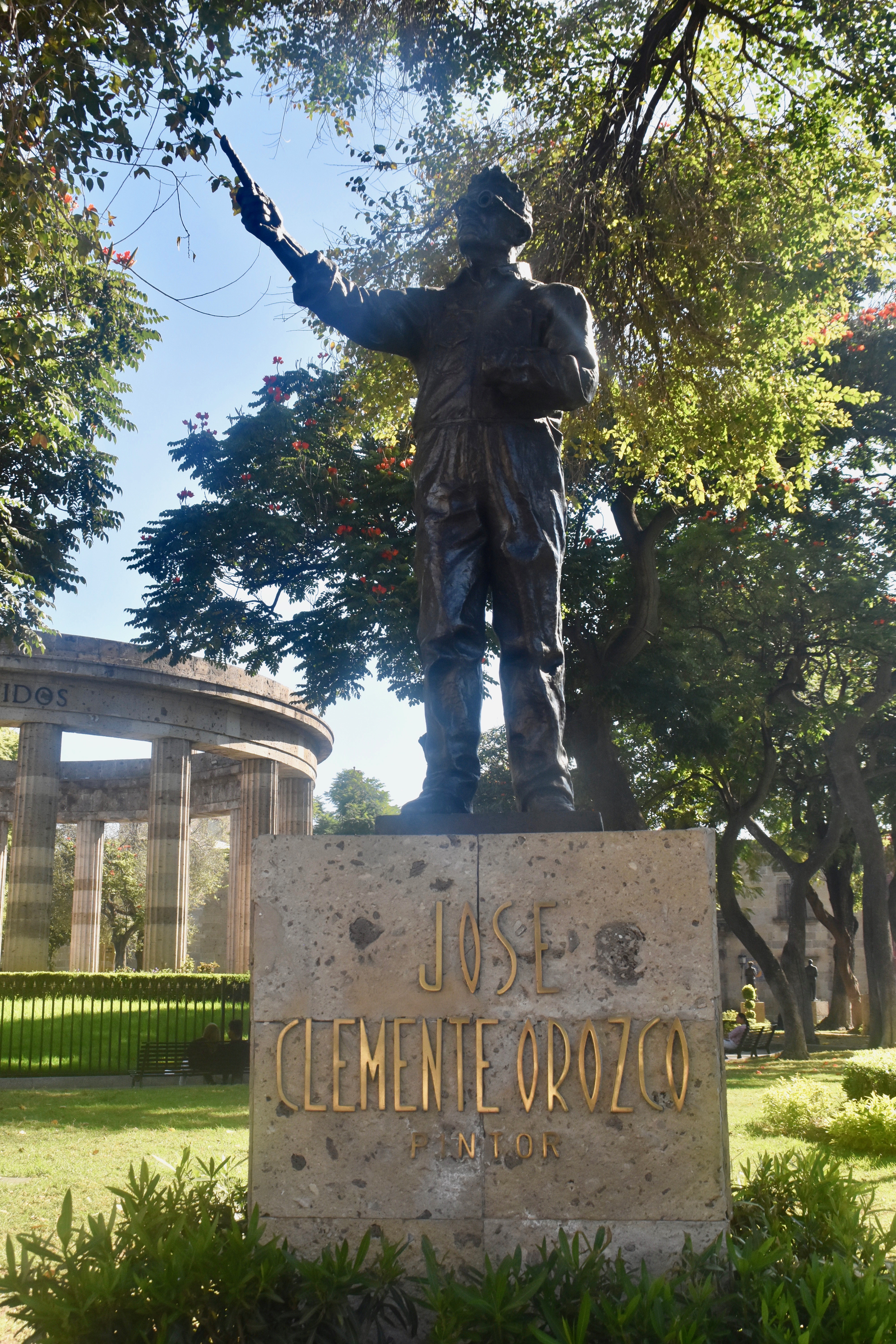
On the side of Liberation Plaza facing away from the cathedral is the imposing neoclassical facade of the Teatro Degollado which has been putting on operas, ballet and other performing arts since 1866.
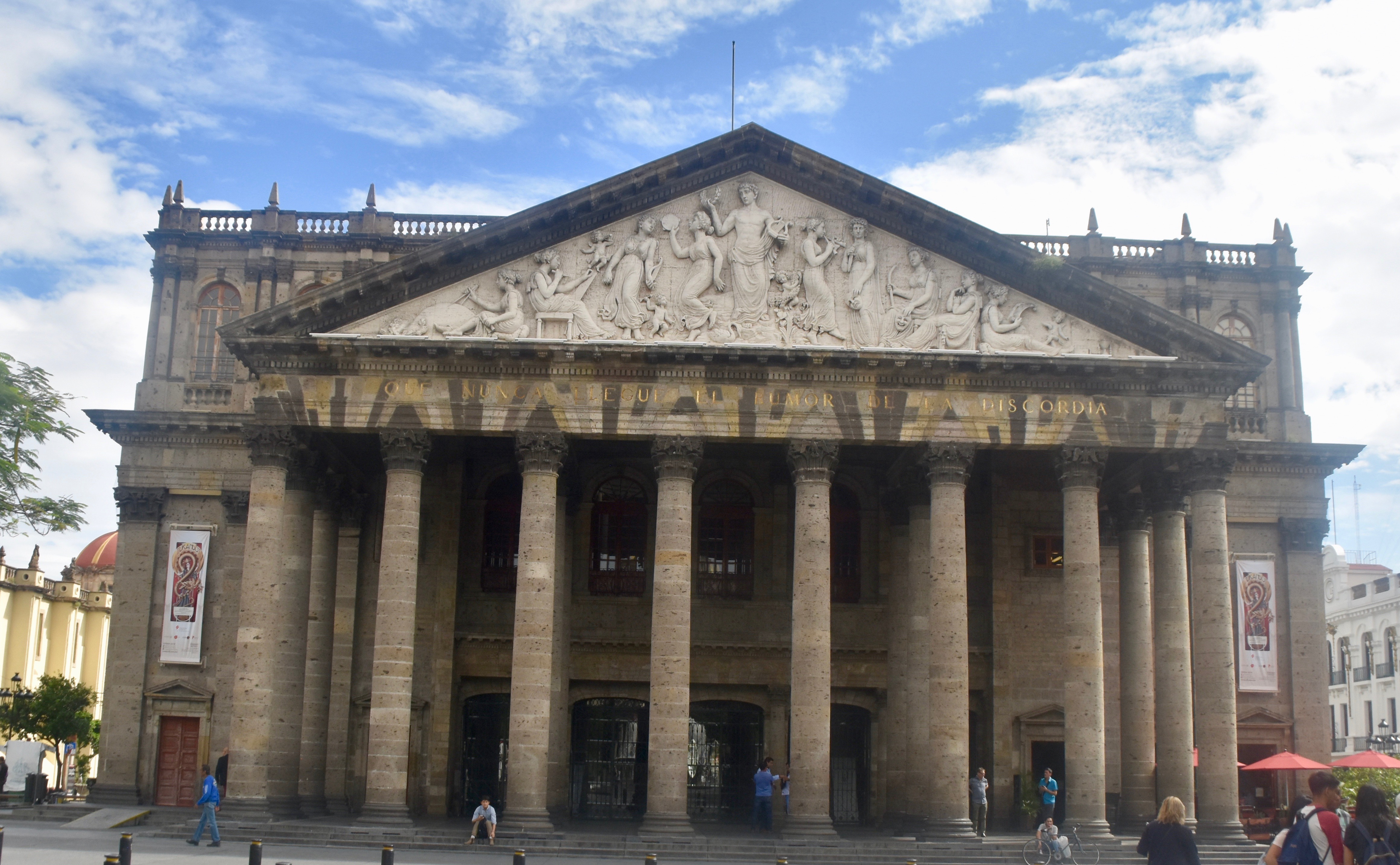
By now you get the idea that there’s a whole lot going on in a quite small area, but there is so much open space that it feels much larger than it actually is. None of the attractions listed above is more than a few minutes walk from each. This is the grand side of Guadalajara, but there’s also a much more human scale to the historic centre starting just behind the teatro. Or you could hop on the Tequila Bus and get blasted.
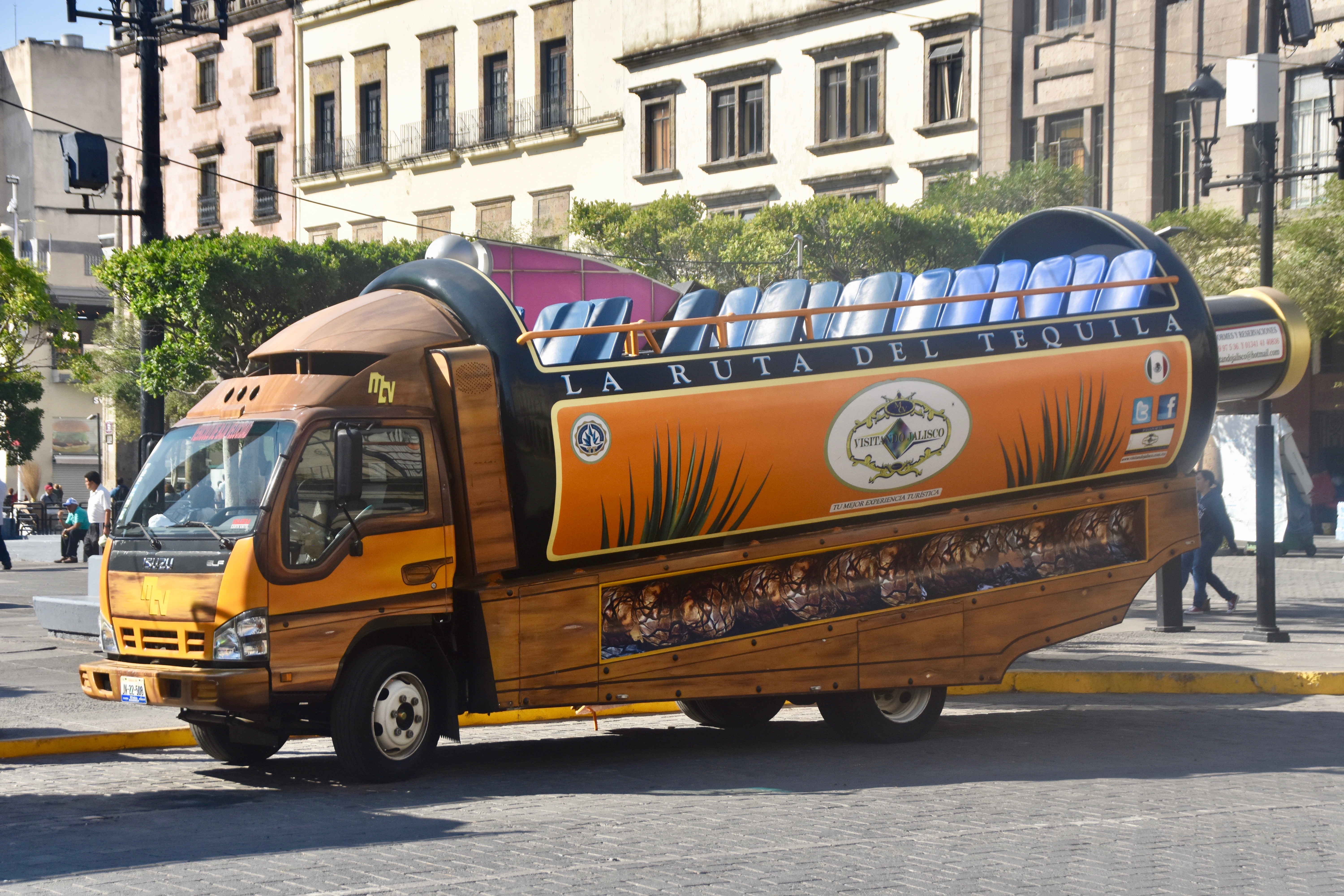
But first, get your picture taken at the fountain commemorating the founding of Guadalajara which is nearby.
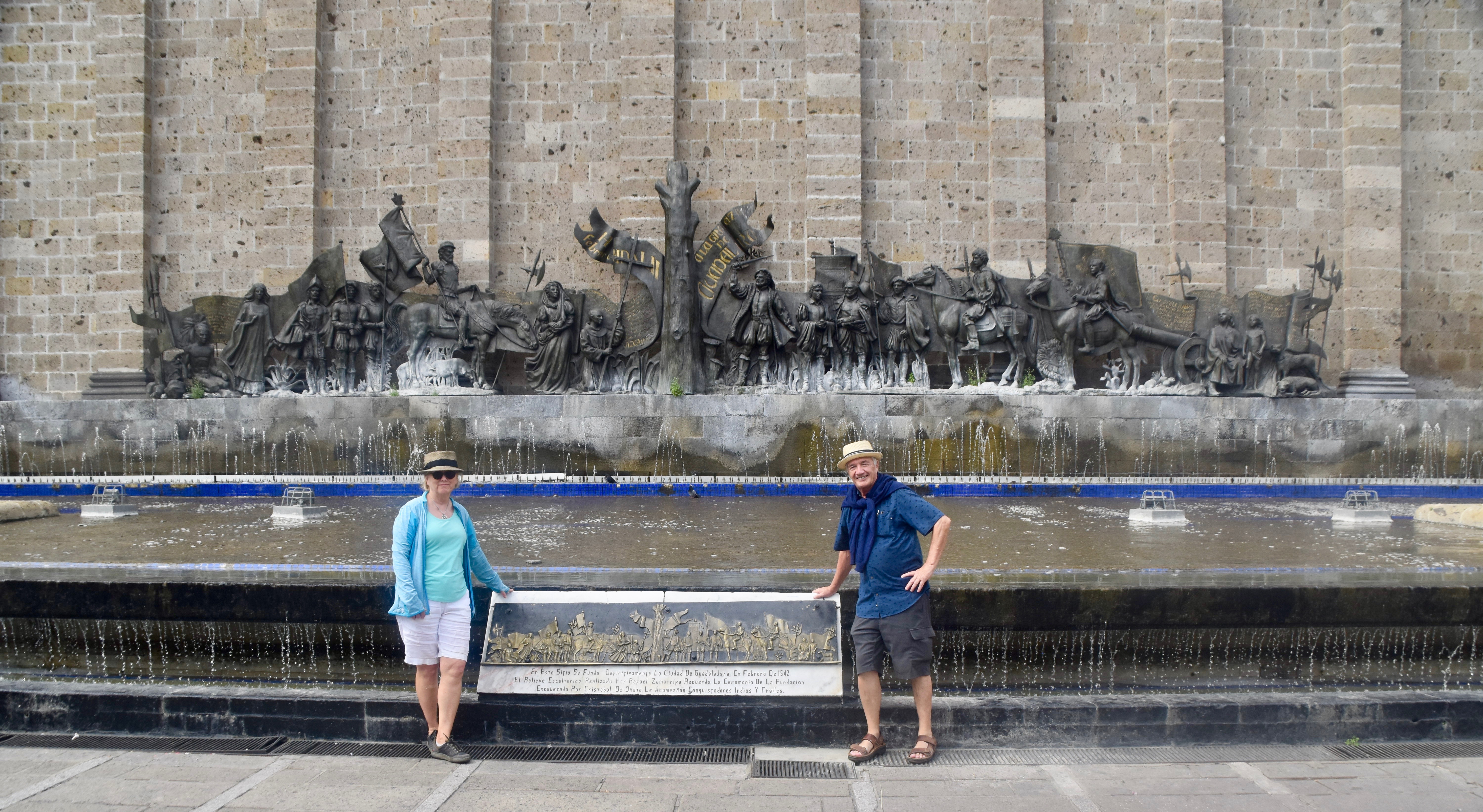
Then head down the pedestrianized Paseo Hospicio that leads straight to Guadalajara’s most significant tourist attraction, the Instituto Cultural de Cabañas. Along the way you will be distracted by the many restaurants and shops – you might even want to buy a bridal dress. Who knows? They’re pretty flashy.
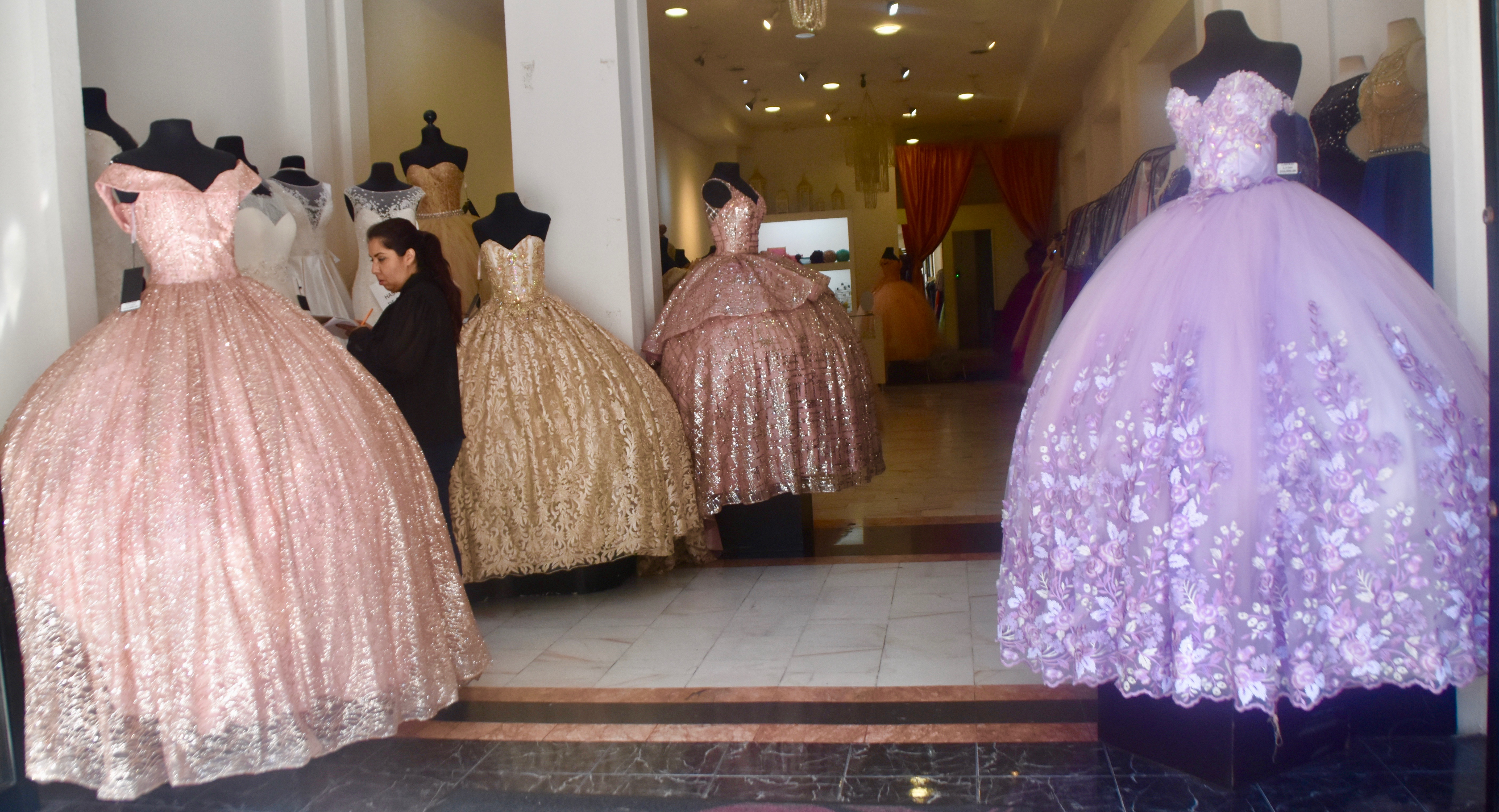
You can also pose in front of the sculpture with the city’s coat-of-arms.
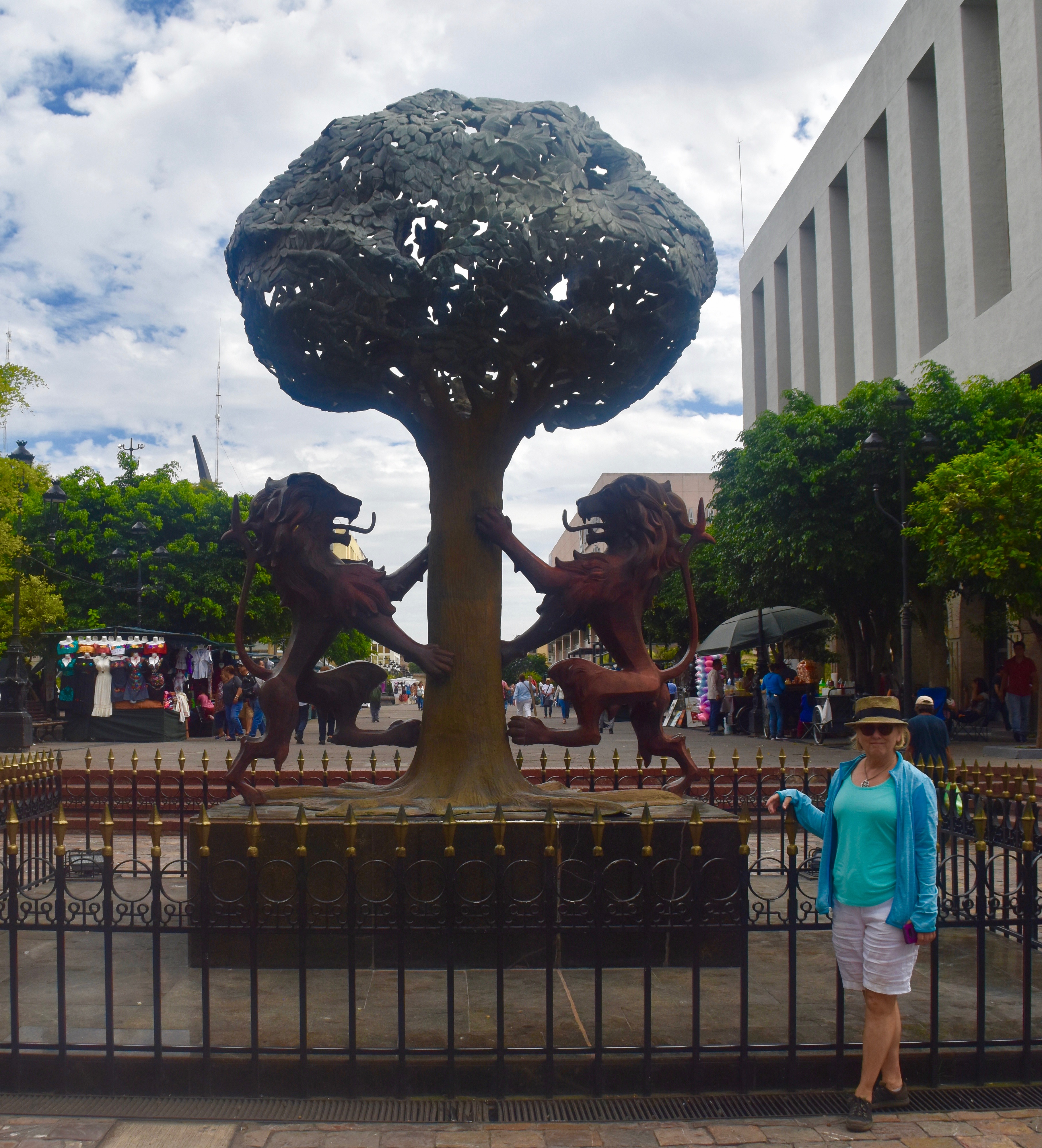
Or watch the boys making water at the Ninos fountain.
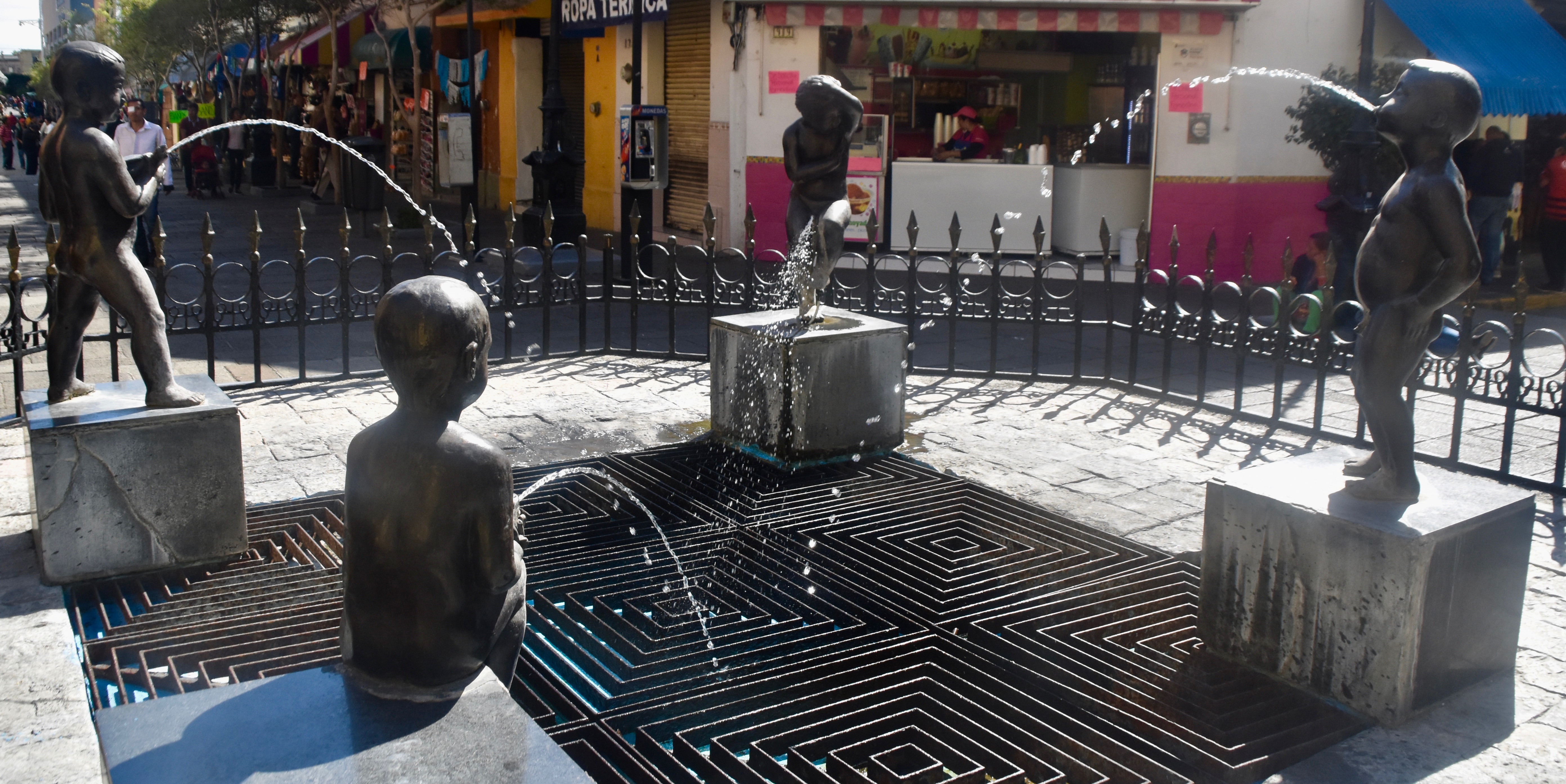
At the end of this Paseo is a reflecting pool with the Instituto Cultural de Cabañas in the background.
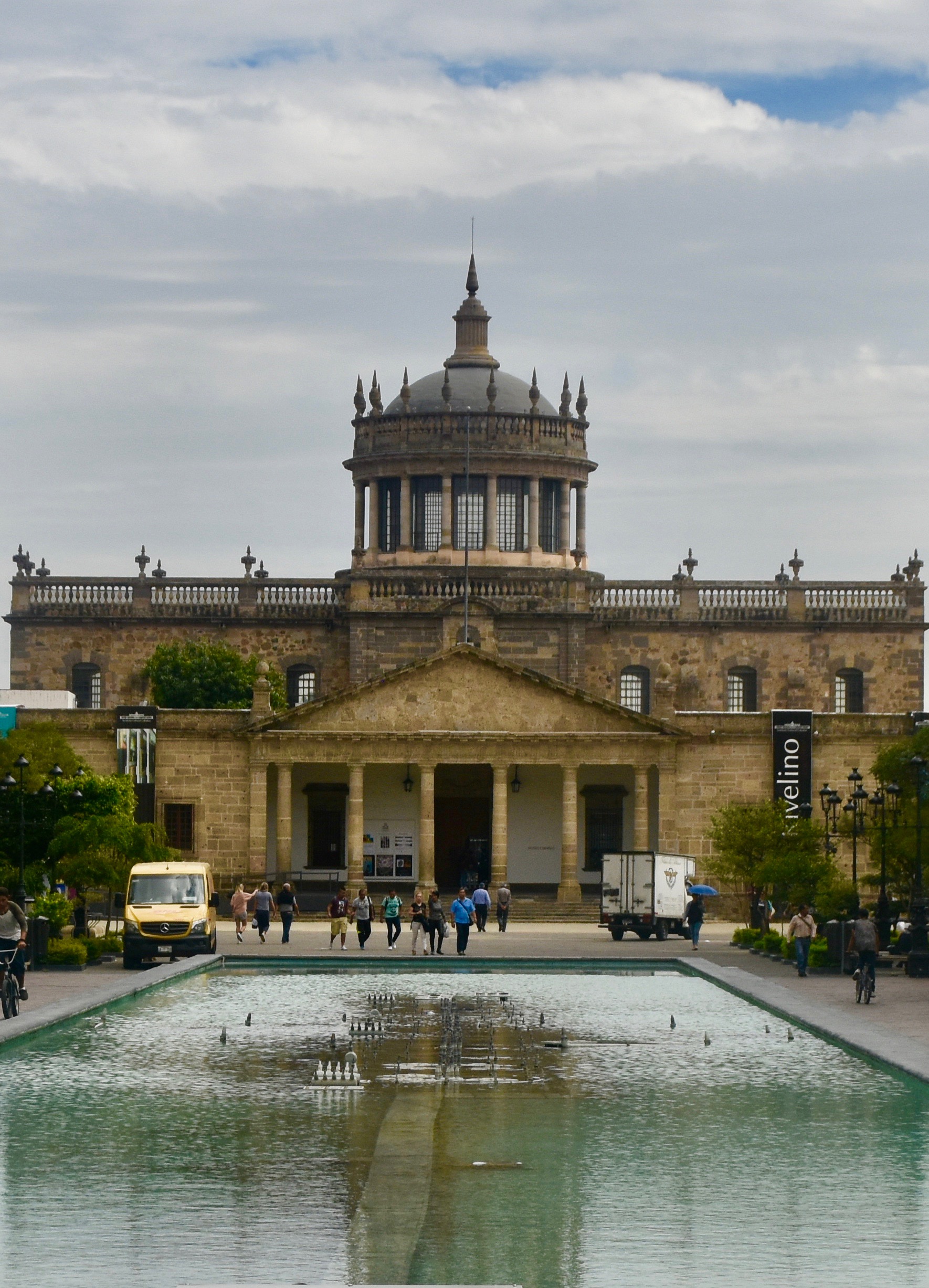
However, before visiting it’s time for a little tomfoolery. Our own version of the the chacmool statues we’ve been seeing at several of the pre-Columbian sites.
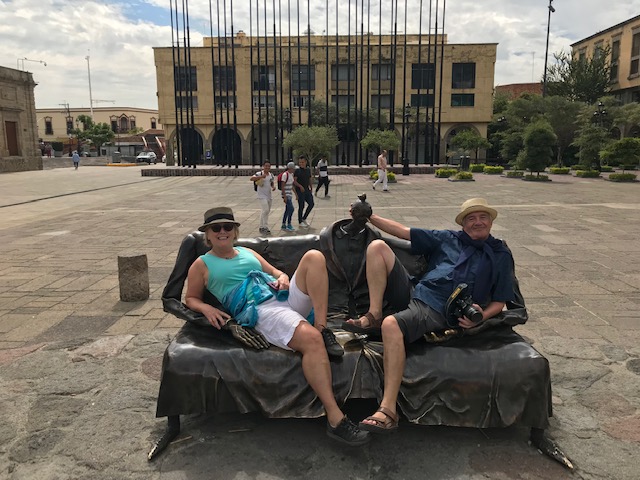
There is a series of whimsical statues in this area that provide lots of opportunity to look dumb, but it’s fun.
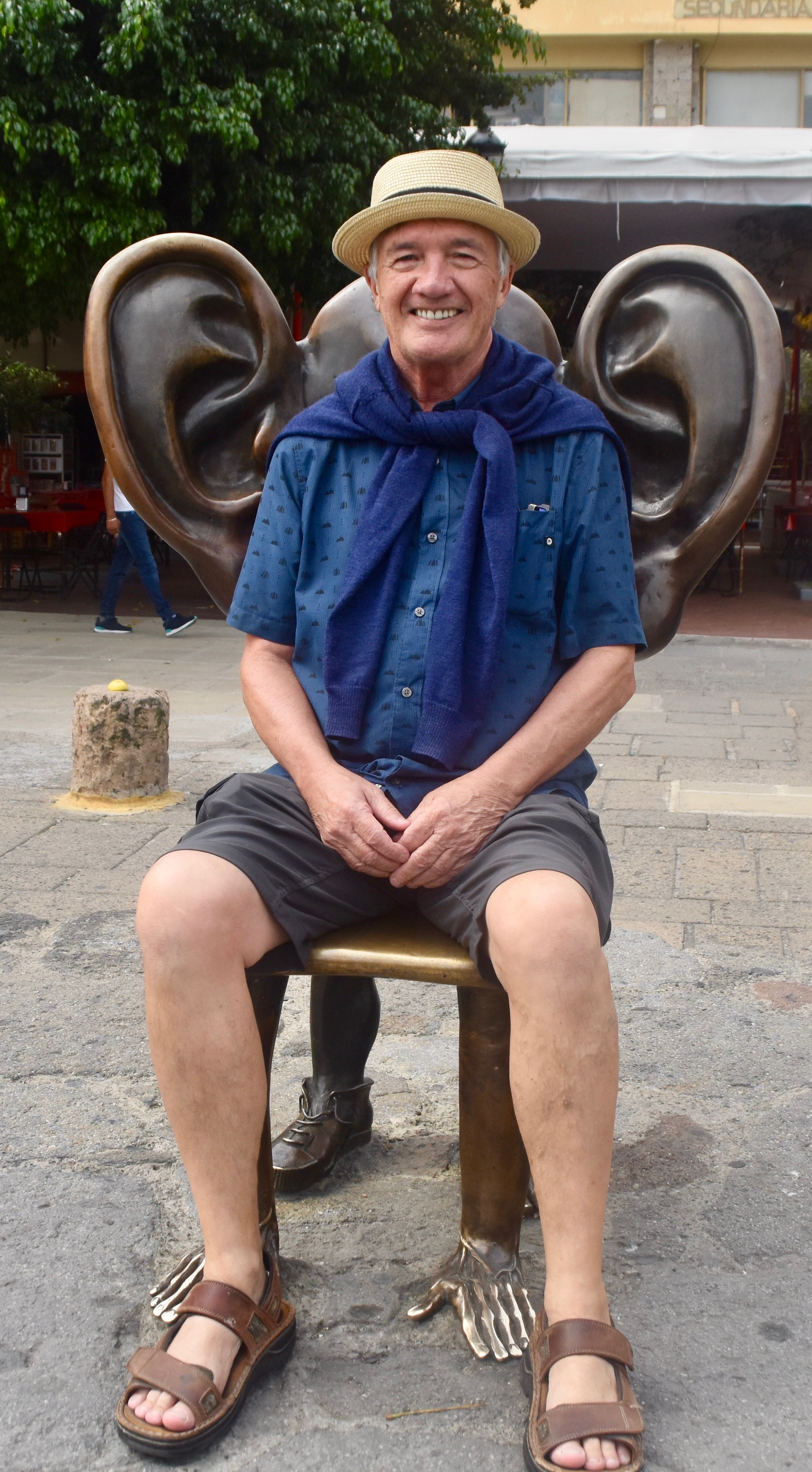
Instituto Cultural de Cabañas
The Instituto Cultural de Cabañas is the current name for a place formerly simply called the Hospicio Cabañas. The name might lead you to believe it was originally a hospital, but in fact it was one of the world’s first institutions set up specifically to tend to the needs of orphans, the aged, and the handicapped. It was so far ahead of its time that in 1997 it was designated a UNESCO World Heritage Site with this description.
The Hospicio Cabañas was built at the beginning of the 19th century to provide care and shelter for the disadvantaged – orphans, old people, the handicapped and chronic invalids. This remarkable complex, which incorporates several unusual features designed specifically to meet the needs of its occupants, was unique for its time. It is also notable for the harmonious relationship between the open and built spaces, the simplicity of its design, and its size. In the early 20th century, the chapel was decorated with a superb series of murals, now considered some of the masterpieces of Mexican art. They are the work of José Clemente Orozco, one of the greatest Mexican muralists of the period.
Essentially the Hospicio is a triple header when it comes to an attraction – the idea behind it was revolutionary, the design of the complex is itself exceptional and it is the repository of some of the greatest art in Mexico.
We started off walking the periphery galleries some of which had a contemporary exhibit of paintings based upon the flags of different countries. Not surprisingly the Mexican and U.S. flags were the most featured such as this one by Carlos Vargas Pons. Note that the centre of the flag has the Mexican national symbol, not the United States’.
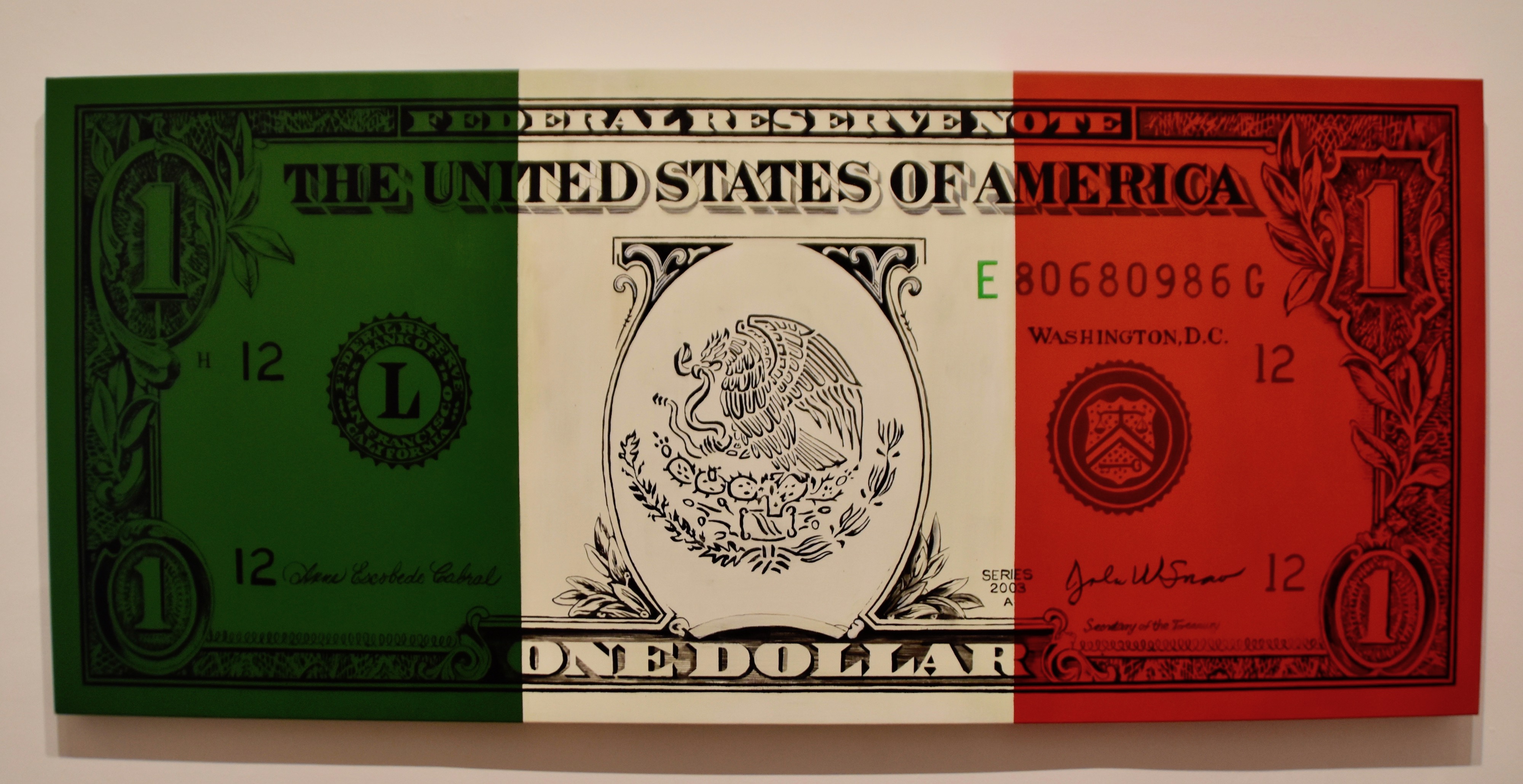
I also like this one by Enrique Flores, but I’ll be damned if I can figure out what a crying Supergirl has to do with the two flags – perhaps it refers to the sad state of affairs between the two countries that exists today. The bottom line is I liked this exhibition because the paintings made you think.
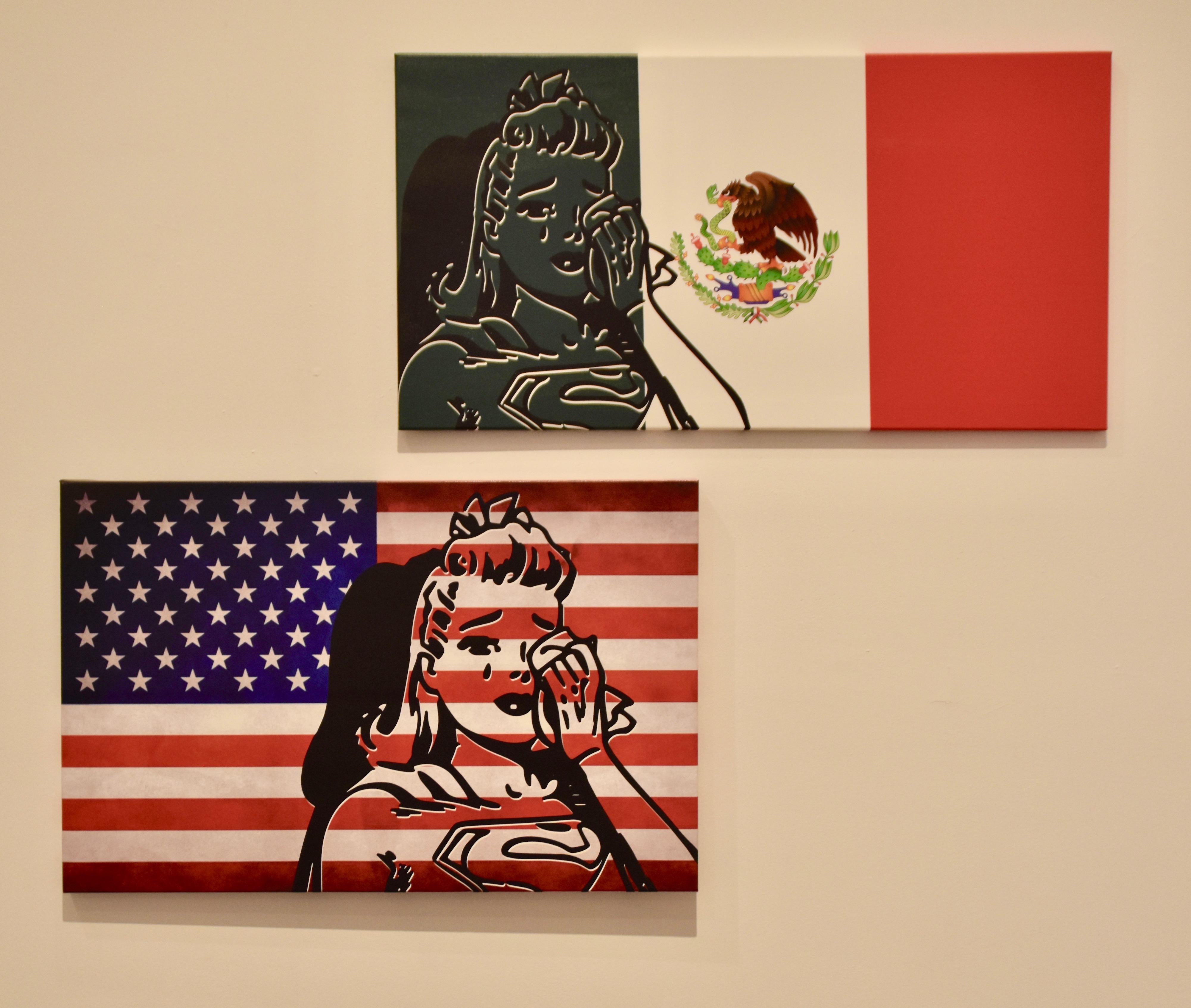
Another gallery contained massive portraits of predatory birds that were quite overpowering, again, something I appreciate in any art.
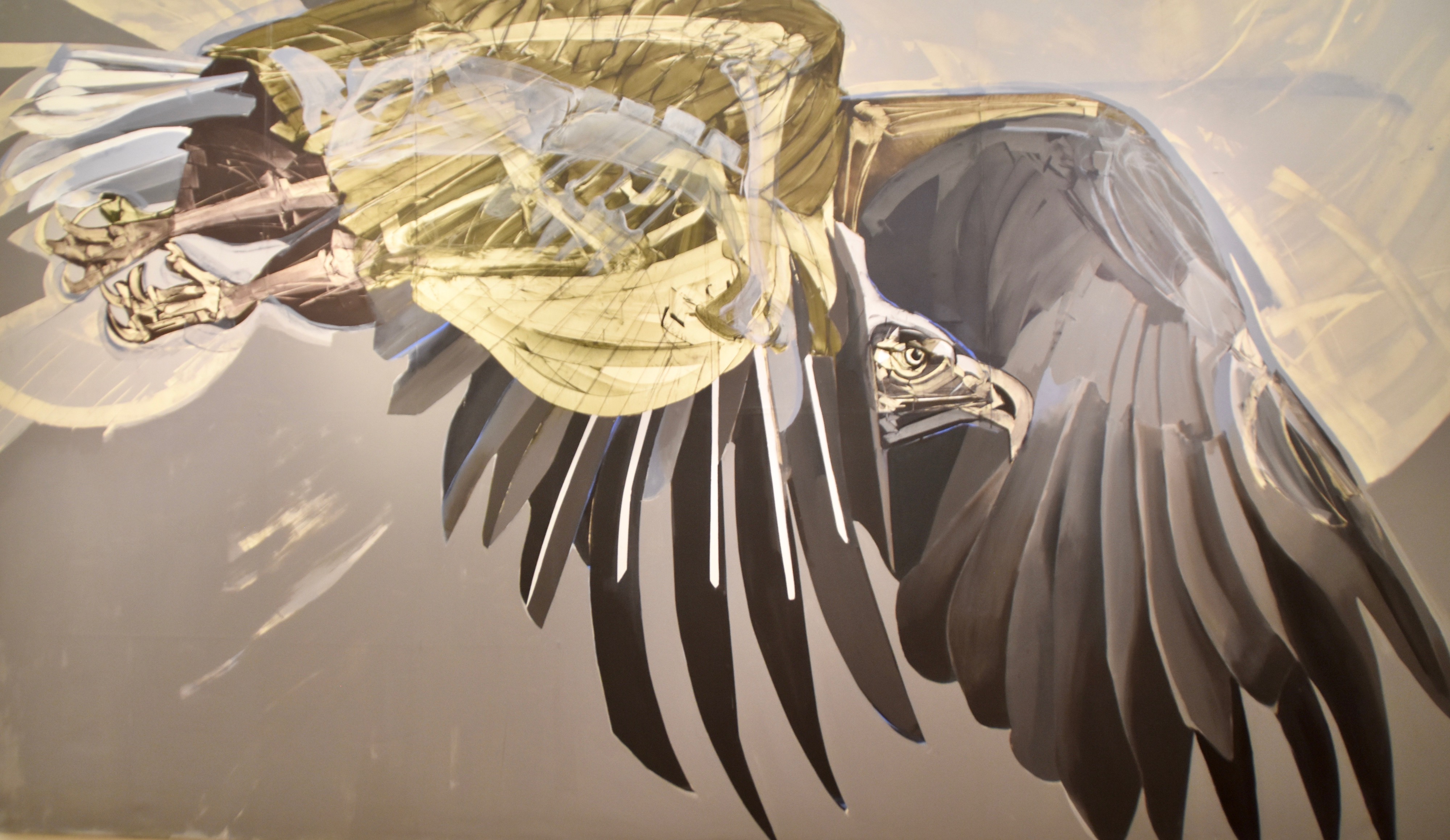
There were a number of sculpture galleries as well. This one of men made from stacked cardboard boxes was innovative to say the least.
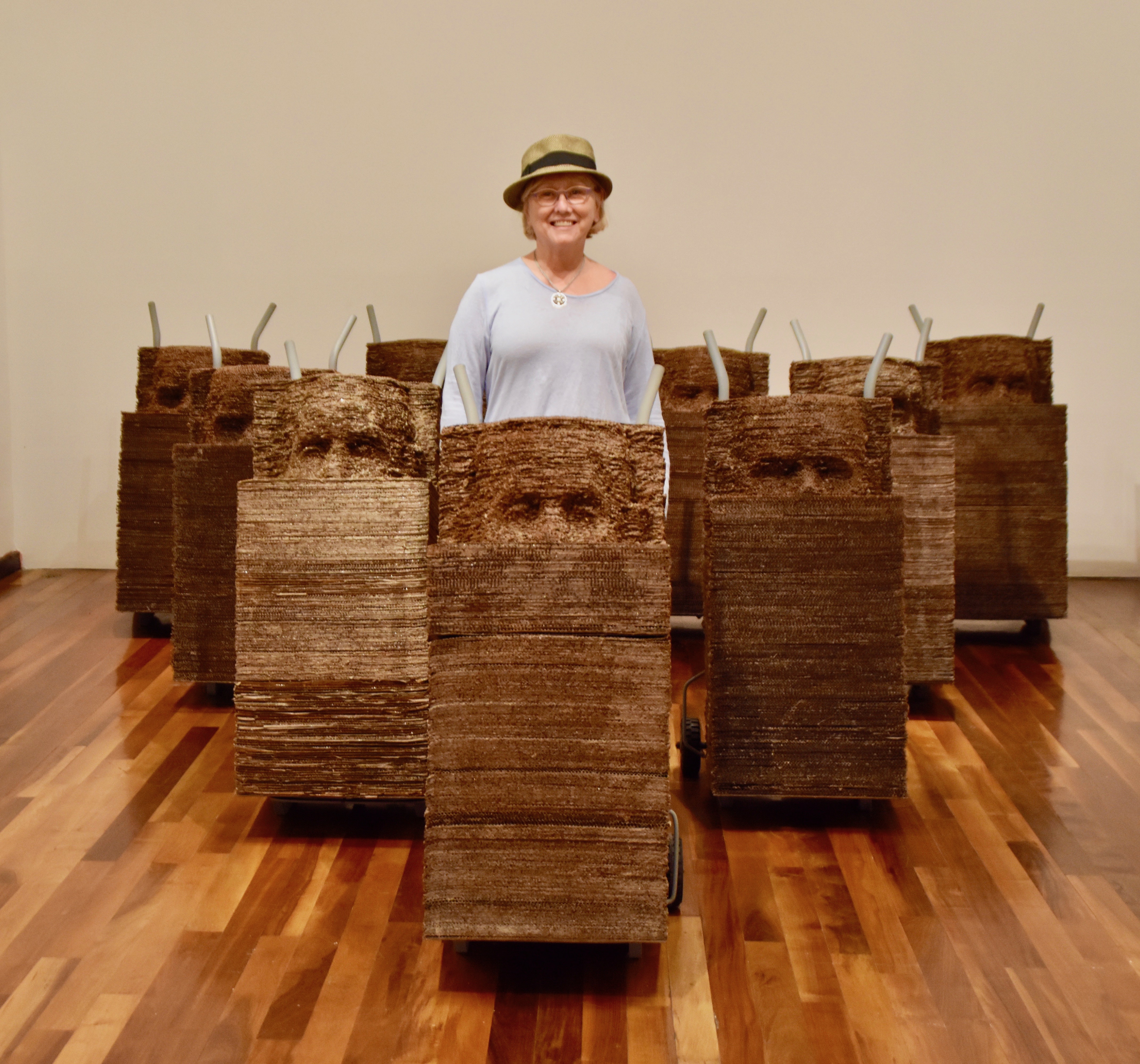
Some were on a very large scale.
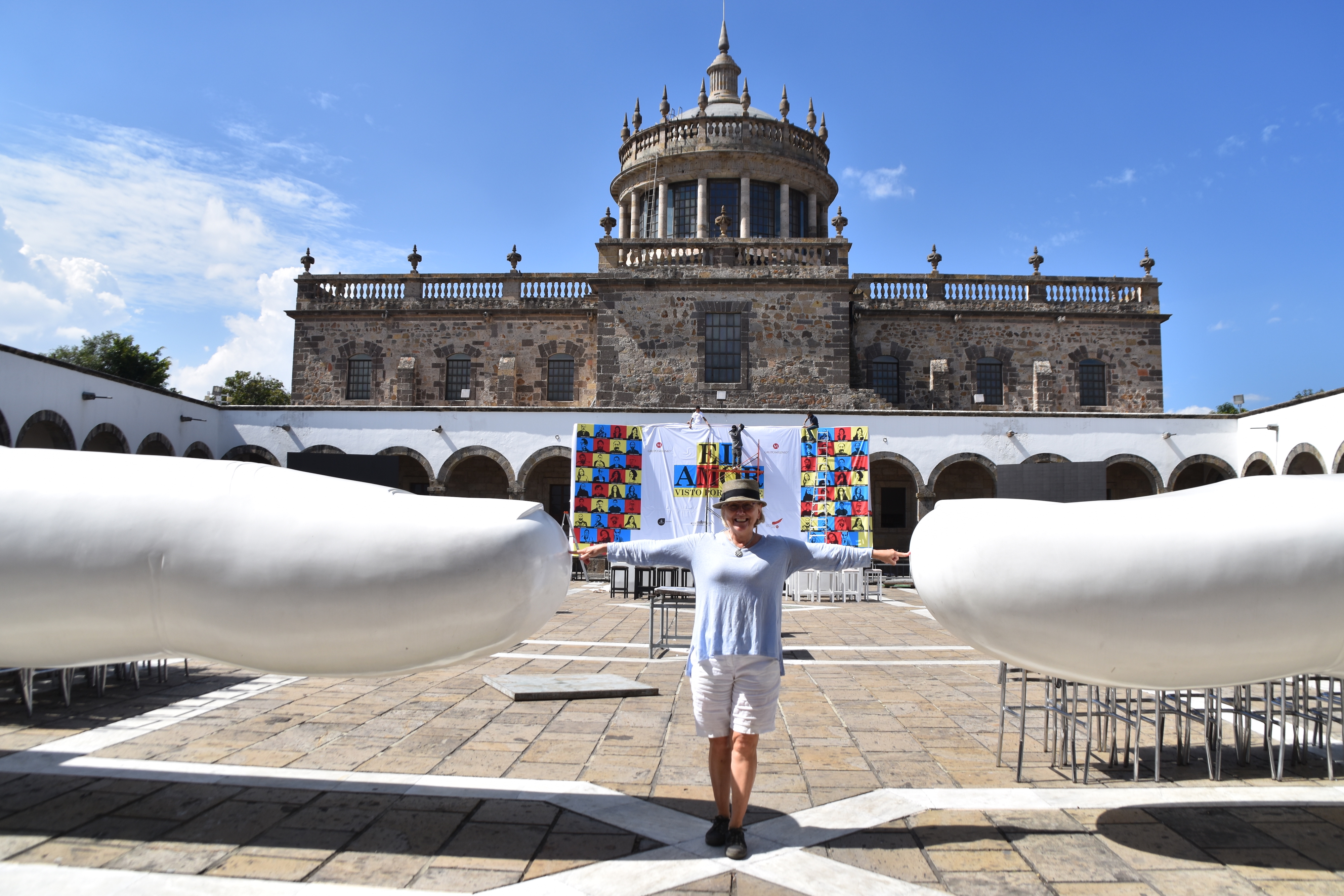
I could easily have done an entire post on just the art work of the Hospicio. However, the main reason most people come here is to view the 57 Orozco murals that tell the story of Mexico, warts and all. Alison and I arrived here by ourselves after the walking tour was over and just gazed up in amazement. A security guard approached us and I wondered if he was going to give me grief for taking photos, but instead, with obvious pride, he gave us a guided tour, interpreting each of the murals in chronological order and ending with the amazing Man on Fire which is considered Orozco’s culminating achievement. Completed in 1939 it depicts a flaming man ascending or descending, depending on your point of view, in apparent human sacrifice that is a reference to both the past and the future.
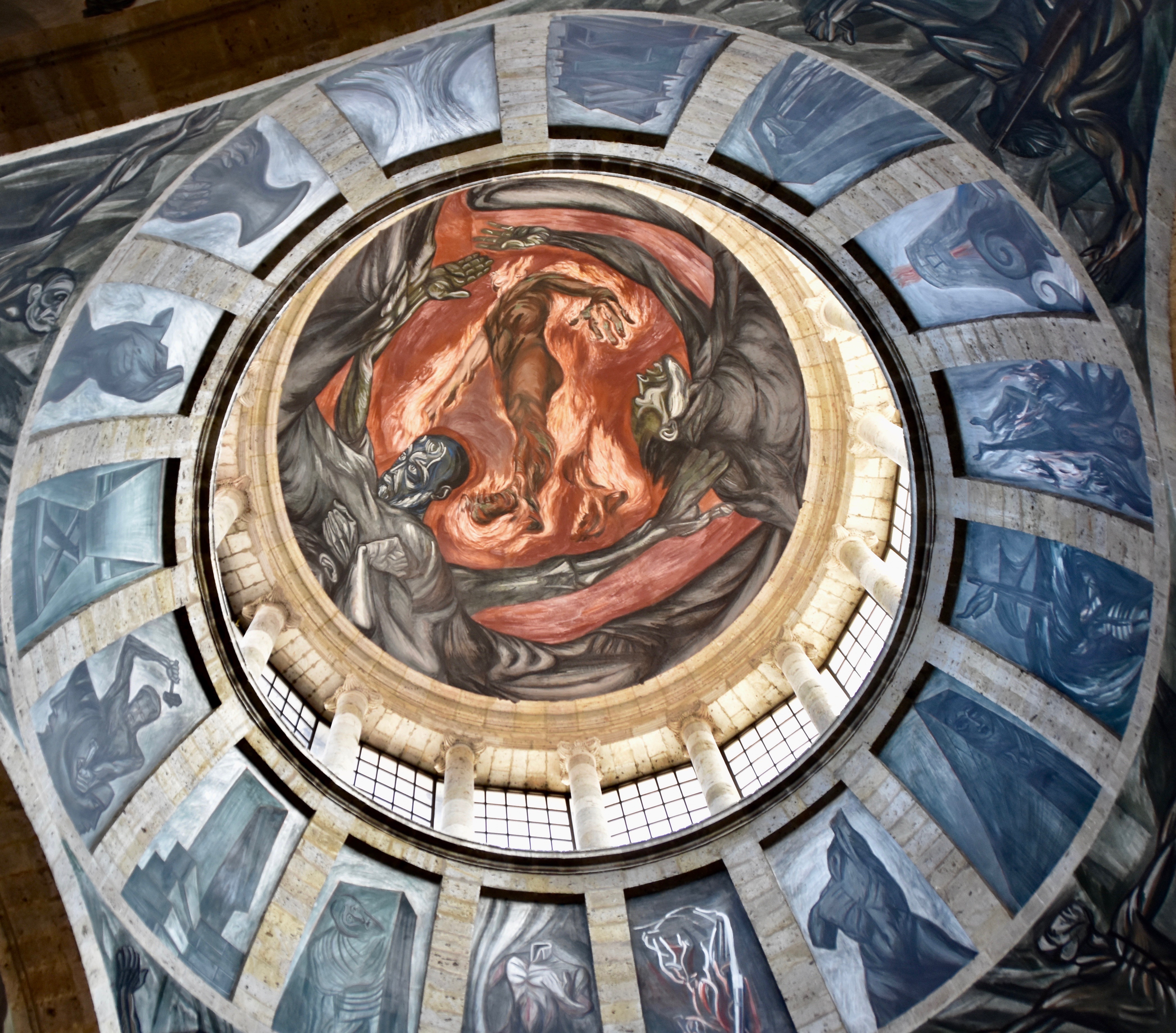
I offered the guard a tip, but he refused, just glad that we had taken the time to appreciate these great works of art.
After visiting the Hospicio we went next door to the massive Mercado Libertad where you could easily spend a full day and not visit more than a fraction of the shops. While most of what I saw was pretty interesting, one thing raised my hackles and that was the bird market where thousands of wild song birds were up for sale. They had been trapped in the wild and would spend the rest of their life in cages.
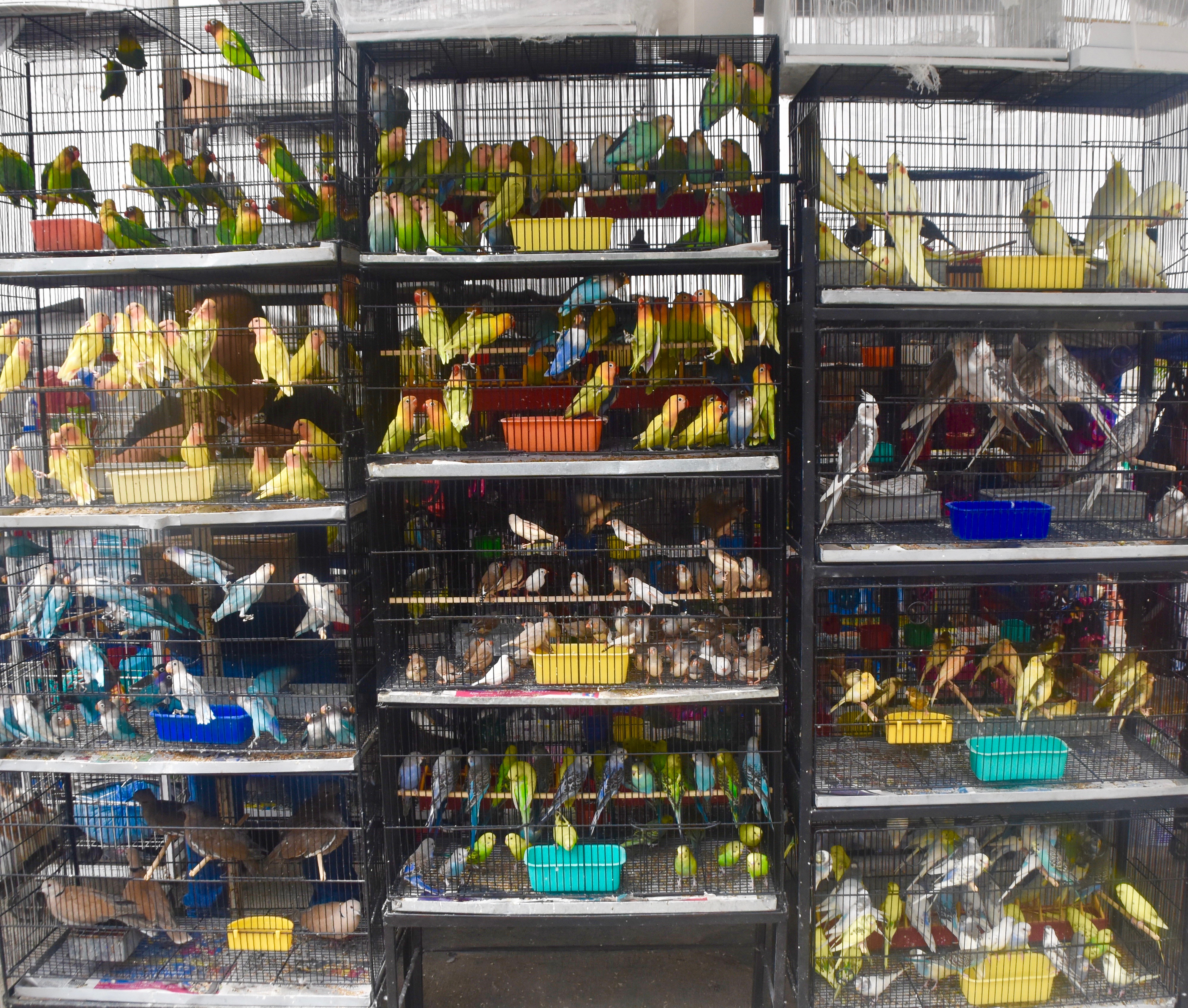
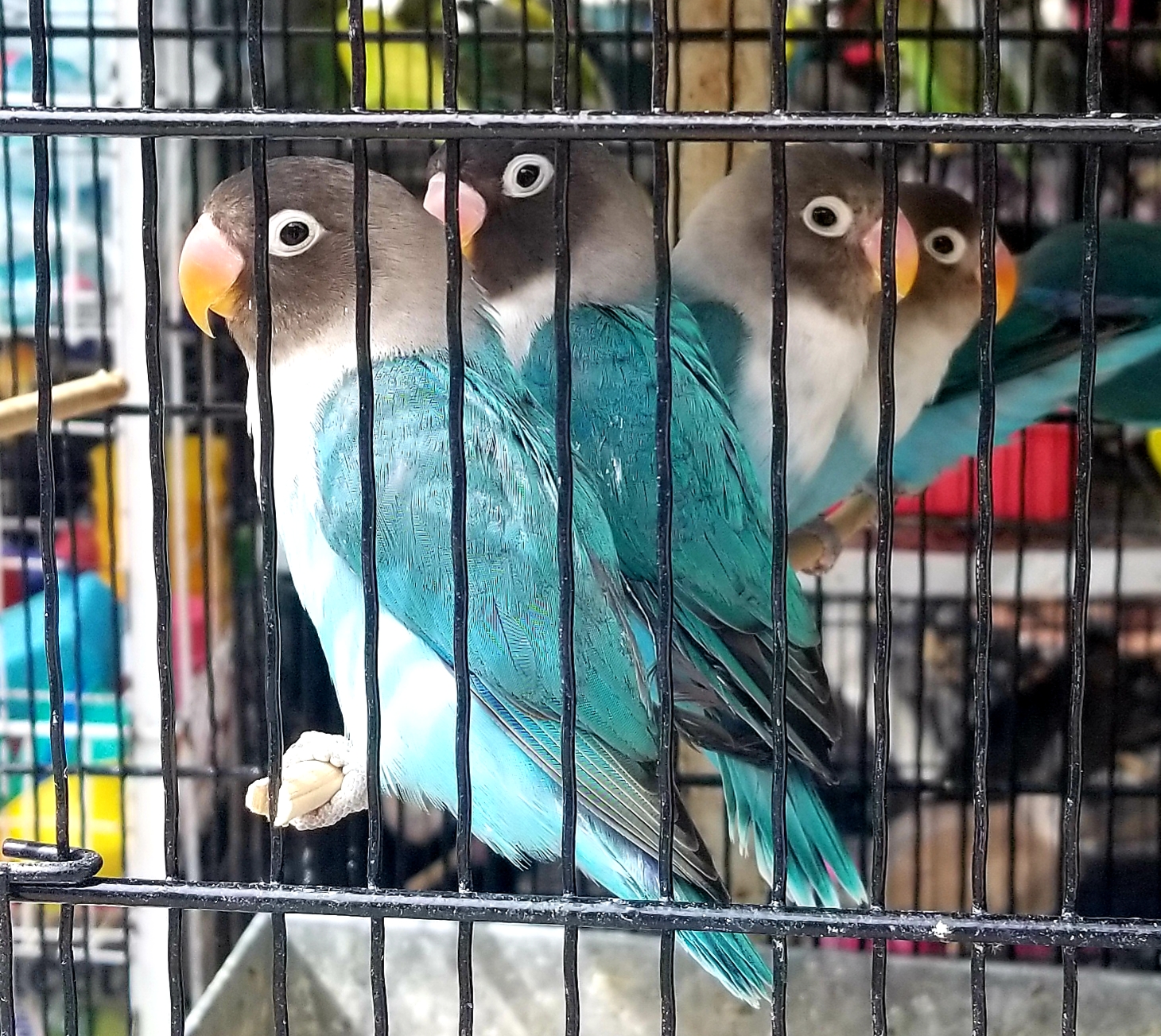
Particularly annoying was to see birds that would normally migrate to North America to breed, such as these beautiful painted buntings that return to Texas, Oklahoma and Louisiana each spring.
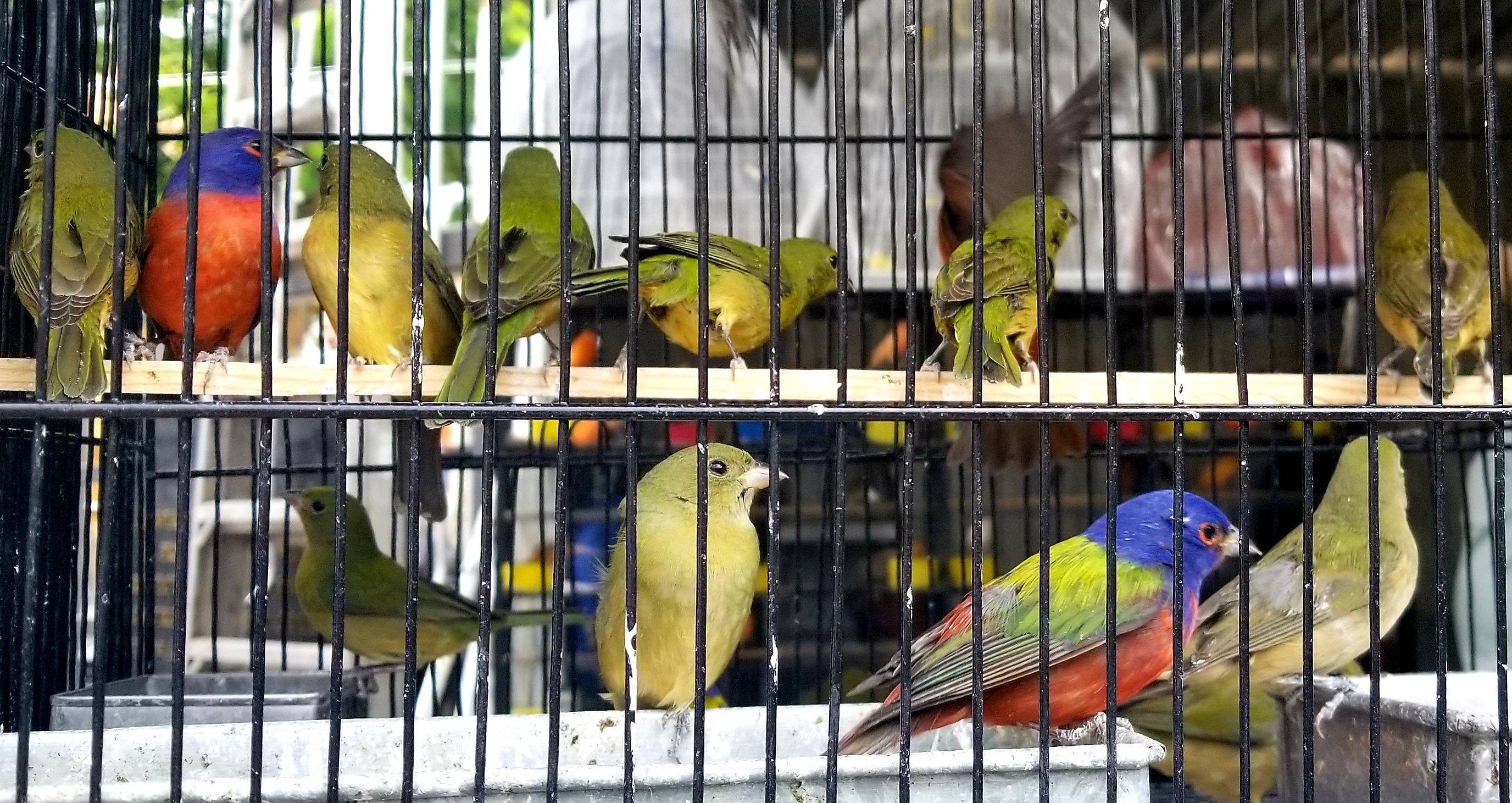
I know that many birds such as budgies are bred in captivity for the pet trade, but I sincerely doubt that many if any of the birds on sale at the Mercado came by that route.
I don’t want to end my last post on Mexico on a sour note so here’s a photo I took during a long walk by myself in areas away from the historic district. There were no other tourists around, but I never felt unsafe or at risk. Nobody tried to approach me for either money or to pull a scam. I could just enjoy Guadalajara in peace.
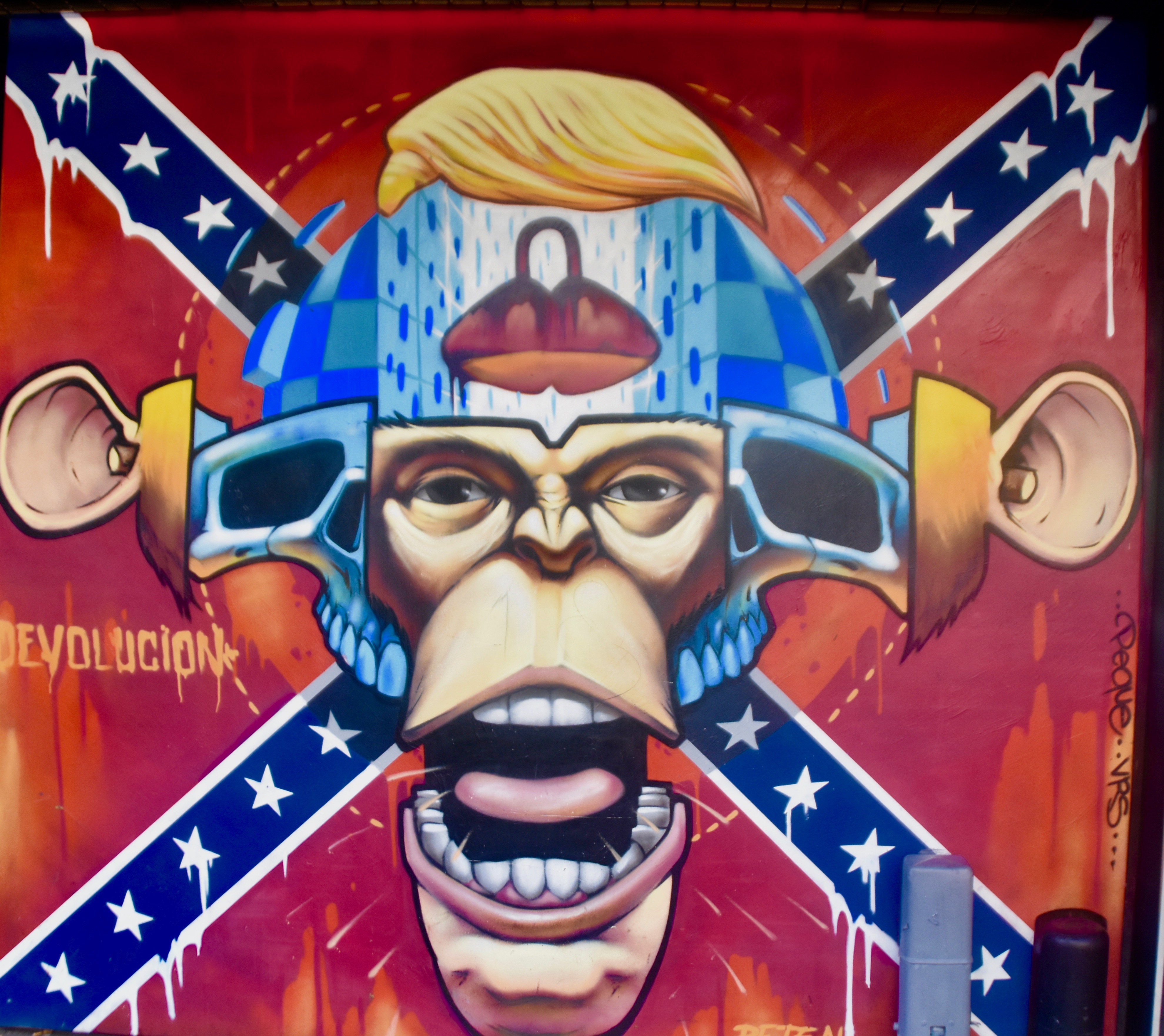
In whatever language it is written, the meaning of this poster I found plastered to a door was unmistakeable. Victor, this picture is for you as I know we share common sentiments. Thank you friend for a wonderful trip and Alison and I hope to travel with you again soon.
Adiós from Guadalajara.

